1/48 Revell PV-1 Ventura, Bureau Number 34623, of VPB-145 at NAS Deland, July 29th, 1943
This true story is based on actual events that happened here at the Deland airport exactly 80 years ago today... on July 29th, 1943.
I wanted to tell their story by writing this article, and building this PV-1 Ventura model, as a tribute to the fallen. It has a tragic ending, but in the end, some good did result because of what happened here.
Keep in mind the United States lost well over 20,000 men and women who were killed in aircraft training accidents alone during World War Two.
I would sincerely appreciate it if you would read this story in it's entirety. It's one of many like this that happened in our local hometown area. Sadly we lost thousands of young men and women during training accidents here in Florida during WW2. I have been able to locate crash records for hundreds, (possibly in the thousands), of US Army and Navy aircraft that crashed here in our general vicinity, many of them often with fatalities.
To give you some background, over the first seven months of 1942, German U Boats sank nearly 400 merchant vessels, including more than thirty-five ships off the coasts of Florida alone.
Roughly 15 months prior to this tragic day, on April 10th, 1942, an oil tanker named the SS Gulf America was torpedoed by U-123 just off the coast of Jacksonville. This is approximately 75 miles due North of Deland.
U Boat Kapitain Leutnant Reinhard Hardegen was in command of U-123. I have read that Captain Hardegen actually observed civilians gathering on the Jacksonville Beach while looking through his periscope. He didn't want to unnecessarily take any chances of injuring these non combatant civilians with his deck gun or torpedo when he attacked the tanker. He wanted any errant shell fire from his U Boat's deck gun to go harmlessly out to sea, and not land into or anywhere near the City of Jacksonville.
Captain Hardegen cautiously maneuvered his submarine into the shallow waters offshore, positioning his U Boat between the Florida East Coast and the SS Gulf America before attacking the tanker. The average depth offshore in this area falls between 60 to 120 feet. This does not leave too much room for hiding a submarine. This is why he attacked at night, for he would have obviously been seen during daytime.
For maneuvering his submarine like this, Captain Hardegen should be commended, because he placed his own, (and his crews) personal safety at risk by placing top priority on the potential loss of civilian lives over theirs, and the possible loss of the Boat. However, he might also have been concerned that if he fired torpedo and it missed the tanker, it could have ended up on the beach. If it didn't explode, the United States would have then had an intact weapon to study. The torpedoes in use at the time by the US navy were notoriously unreliable. They often failed to detonate when they hit the target.
When U-123 was in position between the SS Gulf America and the beach, it launched one torpedo which hit the tanker, setting it ablaze. Captain Hardigen surfaced his U boat and finished off the burning tanker with his deck gun.
When the SS Gulf America was sank, it was loaded with aviation gasoline and was en route to it's final destination, having just left the oil refineries in Texas a few days earlier. SS Gulf America had just made an uneventful crossing through the Gulf of Mexico, going through waters that were routinely patrolled by Wolf packs of German U boats that were looking for targets of opportunity just like this one.
The resulting gasoline fire from the torpedo attack, and numerous horrific explosions that happened shortly afterwards could be seen for miles, because the attack happened at night. Gasoline was burning on the surface of the water too. The tanker was surrounded by fire, and fully engulfed in flames. The multiple explosions could have been gasoline erupting, or possibly the effects of the deck gun as it struck the now sinking ship.
It had to be a scene from Dante's Inferno for those watching the attack unfold from the beach.
A crowd of people had actually gathered on the beach to see what was happening.
What Captain Hardegen thought he saw was indeed a growing crowd of American civilians, who were standing by and watching this tragedy unfold right in front of their eyes.
The civilians on the beach watched. Their curiosity quickly turned into fears, and their fears then turned into reality, when they saw a U Boat silhouette surfacing just offshore in the moonlight. The submarine began firing it's deck gun into the doomed oil tanker right in front of their very eyes.
The War had now stopped at Florida's doorstep...
This turn of events I described above sealed the fate of the SS Gulf America, and many of her crew. 18 crewmen were killed. Because of how Captain Hardegen had positioned his U-Boat, there were no civilian casualties or injuries.
Several days following the sinking, bodies from the crew of SS Gulf America began to wash up on shore along the northeastern coast of Florida, and southern coast of Georgia which is the next State North of us and it shares a border with Florida. The strong Gulf stream currents run in a Northerly direction offshore, and this is likely why some of the bodies were swept northward.
This attack on SS Gulf America had happened only 8 days prior to the famous B-25 Doolittle Raid on Japan.
In response to the sinking of the SS Gulf America, the then Governor of Florida ordered a blackout of all lights that could be seen from the sea, and any that might silhouette passing ships. Vehicles that were driving in the area were also no longer allowed to drive at night with their headlights on.
SS Gulf America was spotted by U-123 because it was illuminated by lights from the City of Jacksonville. This sinking was considered to be part of the "Happy Times" we have read about U Boat operations during this era.
Captain Hardegen and U-123 were operating on the East Coast of the United States as a result of Operation Drumbeat.
Fast forward now, to earlier this same month during July of 1943:
Another German U Boat had just shot down a US Navy observation blimp over the waters near the US Naval Air Station located at Key West. The ever present German U Boat threat was still a very real one here locally. Something had to be done about this, because things were going badly in the Atlantic for the Allies.
The Deland Naval Air Station was originally a small airport that was built in the 1920's. It was located just North of the small town of Deland, Florida, which was only 4 square miles in size at the time. The airport was in area that was later incorporated into the City limits. The airport had several small runways, and the first one was paved in 1936.
During 1942, the City of Deland donated the property where the airfield was located to the US Navy. The Navy immediately went to work by updating the runways, and adding several more of them, while paving them all. The Navy also installed a small city's worth of buildings, which included maintenance hangars, barracks, and numerous other administrative, classrooms, medical sick bays, and to the North, ammunition bunkers.
As a side note, all that is left of the original buildings that were located on the airfield during World War Two is the Chief Petty Officer's House, which now has been turned into the Deland Naval Air Station Museum, and a brick smoke stack. Here is a picture I personally took of the Chief's House.
I took all of these following photos showing how the airport looks today in modern times.
This is a picture from one of Jim Sullivan's books. Notice the caption and the smoke stack / chimney.
I zoomed in on the smoke stack / chimney here.
I took this picture from roughly the same location as the original photo shown above. You can see the chimney in the back ground. This would place the Curtiss SNC-1 "Falcon" in Jim's photo being parked directly on the flight line aircraft tie down area at NAS Deland. This would make perfect sense, because they had a lot of Curtiss Falcons based at NAS Daytona beach during the War. It would have been a common thing for them to fly and land here at Deland, since the Deland airport is only about 25 miles West of Daytona Beach.
Coincidentally, the street behind this area today is called "Flightline Blvd."
This is what the chimney looks like today. I took these pictures along with many others at the Deland Airport a few days ago.
Everything else is gone, other than most of the original runways and a few taxi ways. This is one of the taxi ways now used as a road. During the War, these trees would not have been present. This is all new growth that occurred after the War ended.
In these next two photos, you can still see some of the original pavement. The bottom picture is one of the original taxi ways.
This is what remains of the original North / South runway 00 / 18. Sadly it too is no longer in use.
Unless you want to run into some buildings and parked concrete trucks. This is looking North away from the airport.
This is a picture I took showing another one of the original taxi ways. It has been repaved in some places. The original pavement is visible if you look closely. It is much darker in color than the newer pavement.
This old runway is now called Summerhill Road. During the War, it was the main East / West runway. Now there are some industrial buildings that were built here in the mid 1960's. This building was permitted / allowed by the City leaders way back then, (some 20 or so years after the war ended), to be built directly on top of the runway surface. The reason why it was done like this was based on money. The contractor didn't want to build a proper building foundation, so they were allowed to build directly on one of the major runways.
What were they thinking ? Deland airport was a major hub and it could have been used for much better purposes. It is positioned nicely between Daytona Beach and Orlando. Dumb, dumb, dumb ...
This is an overgrown bunker that is not being used. If you didn't know where to look, you wouldn't know it was there. It reminds me of something you would see on a South Pacific Island.
These are the old ammunition bunkers. Some are still being used today for storage by the City of Deland. Most have been overgrown with trees and vegetation. The entrance doors were once guarded by mounds of earth and concrete walls to prevent enemy aircraft from strafing or attacking them easily.
None of these trees or vegetation would have been present during the war. All of this vegetation has grown up since the end of World War Two.
This is the center of the Deland airport today. It is a busy place but likely not as busy as it was during the War.
The newly upgraded Deland airfield was placed into operation by the US Navy on November 17th, 1942. A formal ceremony with the Deland High School marching band performing, took place as the NAS Deland was now officially open for business.
NAS Deland would remain one of the larger training bases in the Central Florida area during the War.
The US Navy handed the airport back over to the City of Deland on March 15th, 1946 shortly after the War ended.
Many of the airports in the vicinity went through a similar transformation. NAS Daytona Beach was one of them. Other local airports, like Spruce Creek, were built entirely from scratch to help train pilots for the War.
Spruce Creek was simply abandoned by the US Navy after the War ended.
I can remember people flying RC airplanes at NOLF Spruce Creek when I was a kid. People (with my Dad being one of them) would also gather here and "unofficially" drag race their cars and motorcycles occasionally, using the paved runways as an improvised race track. Now the once abandoned Spruce Creek airport has been fully developed and is a gated aviation community, where one can taxi their own private airplane to their own private hangar and walk inside their house for dinner after work. Sadly most of the original wartime runways and taxi ways have been removed. Houses and an 18 hole golf course now occupy the space where runways once were.
Going back to NAS Deland as it was called, it was used primarily as an advanced flight training field. The abbreviation "NAS" stands for Naval Air Station. These letters were always placed ahead of the name where the airport was located.
This means that NAS Deland was the last training stop before many Naval and Marine Corps flight crews and pilots were shipped out overseas and deployed throughout the world. Crews that operated here flew and manned Lockheed PBO-1 Hudson and PV-1 Ventura's, SBD Dauntless, F4F Wildcat and later F6F Hellcats, PB4Y-1 Liberator and later PB4Y-2 Privateer crews, as well as SNJ "Texan", Curtiss SNC-1 Falcons, and finally the Curtiss SB2C Helldiver. It wasn't uncommon to see a "Yellow Peril" Stearman or two on the flight line either.
Deland was one of the main anti submarine training bases. The Hudson / Ventura twin engine crews, and later the Liberator and Privateer 4 engine aircraft were the main ones used in this type of mission. Some of the earliest U Boat kills were completed by air crews that were trained right here in Deland.
The following PV-1 Ventura units were established in Deland, where they received their training prior to shipping out. These "patrol" units were designated as a VP unit initially, and "Bombing" units were called VB's. Later in the war, they were called a VPB unit when the patrolling mission and bombing missions were combined together.
The "V" designator stood for heavier than air aircraft.
The "P" stood for Patrol aircraft
The "B" stood for Bombing aircraft
These are the PV-1 Ventura units that were established at NAS Deland.
VPB-126
VPB-127
VPB-128
VPB-129
VPB-130
VPB-131
VPB-132
VPB-133
VPB-134
VPB-141
VPB-143
VPB-145
Each unit had between 14 to 16 aircraft. From what I have read, most of the Unit Commander's aircraft were numbered with a 1 on the fuselage sides. The Executive Officer had a number 2 on the side of his aircraft. So the Squadron Commander's aircraft from VPB-145 would have had the fuselage side code of 145-B-1 painted in Black. It would have been located on the rear sides of the fuselage. The XO's plane would have been numbered as 145-B-2, and so on, until all of the consecutive numbers were used for the planes they had assigned to them.
The very first Naval aircraft to arrive here at NAS Deland were PBO-1 Hudson's from VP-82. These were camouflaged in colors that were originally intended for use in the Royal Air Force. The round US Star with the red circle in the center was used, and the rudder was painted with 13 alternating Red and White stripes, following the early War marking directives. I have a 1/48 Classic Airframes kit that will be built in these markings someday...
When the SBD Dauntless planes were being delivered to NAS Deland in substantial numbers, the majority of the existing PV-1 Ventura's used for training purposes were then sent to NAS Sanford, which is approximately 30 miles due South of here. NAS Sanford then focused primarily on training Fighter pilots in F4F / FM Wildcats, and PV-1 Ventura crews.
This aircraft reallocation allowed the Navy flight instructors stationed here at NAS Deland to concentrate aircrew training on dive bombing, and the associated tactics that went with it. Later on, as the War progressed, and the Curtiss Helldiver was the front line dive bomber, the SB2C's were added to the aircraft inventory types you would find at NAS Deland.
Likewise, sometime in 1943, the F4F Wildcat fighter training portion from NAS Deland was moved to nearby NAS Daytona Beach, and some were also sent to NAS Sanford as I mentioned above. There was just too much happening here at NAS Deland, so the fighters were moved from the NAS Deland airfield to NAS Daytona Beach and NAS Sanford where they could be better used to train fighter pilots.
But the fighters eventually returned... to train fighter pilots in the art of dive bombing and close air support missions. Sometime in 1944, as the F4U Corsair and F6F Hellcats started being used as fighter bombers at sea by the Fleet, (and by the Marines from land bases), the older F4F Wildcats, (including many FM-2's) were used in this role as a fighter bomber trainer.
Older F4F and FM Wildcat's, along with some F6F Hellcats, and F4U Corsairs, could now be found here at NAS Deland. These types of fighters were also being stationed at nearby NAS Daytona Beach, which is approximately 25 miles due East of Deland. Daytona Beach was primarily a Fighter training station, where Deland was training bombing.
There were also some older F6F Hellcat's that stationed here at NAS Deland as well. Most of these Hellcats and Corsairs were located at NAS Daytona Beach though. Most of the Corsairs were based out of NAS Jacksonville.
Here is a sobering statistic taken during the War. It was said that on average one dive bomber pilot died while training every single day. This is just for a dive bomber pilots, and it doesn't include any other types.
Now you have a good idea of the different aircraft types that were used here at NAS Deland.
The typical flight syllabus for these various aircrews included formation flying, aerial gunnery, dive bombing, low level bombing, high altitude level bombing, strafing, combat tactics, navigation, radar training, cross country flying and various other things such as inflight aircraft recognition. Occasionally these aircrews would be "bounced" by fellow US Army aviators for fun !
In turn, the Navy and Marine crews returned the favor, and did the same thing to the US Army aircrews.
These air crews knew how to fly when they arrived at NAS Deland, but they needed additional training before they were shipped out to the Fleet. They were sent here to NAS Deland in order to learn more advanced combat techniques. However in the early stages of the War, many pilots who arrived here only had a single engine rating. Those who did have a multi engine rating were often PBY Catalina pilots that had been reassigned to bombing units. There were even some pilots stationed here that came from OS2U Kingfisher units !
Pilots here practiced what was known as "Field Carrier Landing Practice". It was often given the acronym FCLP to denote this type of training.
FCLP training is where an outlined area the size of an aircraft carrier was painted onto the asphalt runway. There were landing lights set up in this location, and there was also a Landing Signal Officer present. These fledgling aviators continued to practice landing on the aircraft carrier outline to keep their flying skills honed. Others were sent here to become more proficient at landing on a carrier before they attempted doing it on the real thing.
From what I have read, the pilots were required to successfully complete a minimum of 8 FCLP landings before they would be allowed to land on a real aircraft carrier. Most of these first time carrier landings were done in the Great Lakes, on board the USS Sable, and the USS Wolverine. Others were done offshore near the East Coast of Florida or the Bahamas on escort carriers.
This type of FCLP training was conducted nearby at OLF Spruce Creek, Bunnell, and also at Tomoka. I have found accident reports showing this.
FCLP training is also what inspired the legendary Jimmy Doolittle that he could take B-25 bombers off the deck of an aircraft carrier... but that's another story. Apparently Doolittle saw the outline of an aircraft carrier painted on a paved runway... and the light bulb went off.
The main Naval air crew training bases that were located in this area included:
Daytona Beach
Deland
Sanford
Jacksonville
Melbourne
Fort Lauderdale
Miami
In addition to these Naval air bases, just here in the central Florida area alone, there were also what was called "auxiliary airfields". These were usually smaller in size, and they typically didn't have the same facilities available on them such as maintenance, repair shops, and armament buildings.
Sometimes you will see these airfield are listed as a NAAS, which stood for Naval Auxiliary Airfield Station. These acronyms will often show up when researching.
These Naval auxiliary fields (sometimes called NOLF's or Outlying Field) were located nearby in the cities I have listed below.
Spruce Creek
New Smyrna
Ormond
Tomoka (sometimes called Ormond)
Bunnell
Palatka
St. Augustine
Green Cove Springs
Cecil Field
Bostwick Field
Branan Field (used by the Blue Angels when they first started)
Switzerland Field
Whiting Field
Flemming Island
Lee Field
Osceola
Vero Beach
and many more... These are just the first ones that come to mind right off hand.
The US Army also trained many of it's air crews in Florida, so the skies around here were VERY busy. The Army tended to use bases located in the center of the State, carrying over to the West Coast of Florida. The main exception to this would be NAS Pensacola, and all of it's outlying fields such as Barrin Field and a few others. Pensacola was a major Naval training base as was Jacksonville.
Now you have a good idea of where, how, and why you might train as a Naval or Army aviator here during the War.
Now let's get on to the story behind this particular PV-1 Ventura that I have built this model of.
Thursday morning, July 29th, 1943, was like any other typical day at the Deland Naval Air Station. The United States was at War with Germany, Italy, and Japan. The risk of German U Boats sighting and sinking Allied ships off the Florida coast was a very real and dangerous one. Because of this, many of these Ventura's were armed while flying training missions. Training missions often incorporated flying over the Atlantic Ocean in search of German U Boats.
If or when something was sighted, the position was sent by radio and then it was often immediately attacked by the sighting crew. The Civil Air Patrol also flew missions offshore to help with searching for U Boats and missing or downed air crews. There were some very misfortunate whales that were killed in these attacks offshore during the war. I'd imagine a few Whale Sharks were knocked off too.
Here is a snap shot of today's weather, exactly 80 years later. Ironically it is almost identical as the weather was back then. Only our low temperature for today was 1 degree hotter.
This particular morning started out like most did here at the Naval Air Station in Deland. Physical training exercises, and a morning formation with roll call was held. Chow was served in the mess hall, and the flying crews ate their breakfast if they wanted to. The duty rosters were checked. Maintenance crews were already busy working on the aircraft that were stationed here. Occasionally you could hear an aircraft engine starting up. Vehicles would be driving around and the airfield was a beehive of activity.
Training flights would be taxiing into their take off position waiting for the word from the control tower to get into the air... at all hours of the day... morning and night. The roar of engines could be heard for miles... as were the occasional bursts of machine gun fire, or an explosion from practice bombing.
The weather was typical for Central Florida during this time of the year. The weather on this particular day was hot. Not any hotter than usual, since the heat record for July 29th was set way back in 1919, (a record that still holds true today) when it reached 98 degrees.
The hottest day for the month of July had already happened in 1943. It was 98 degrees back July 6th of this year. Today however, on July 29th, 1943, it was "only" 92 degrees Fahrenheit. Earlier on this morning, there was a low temperature of 73 degrees. There wasn't any rain on this day, but it was very humid. I actually checked the weather records for this information...these are screen shots from 1943.
Because it was so hot, the 3 man crew on board this Ventura decided to "bend" the rules a little. So they shed off some of their flight gear, and were stripped down to the waist, and not wearing any shirts, gloves, or flight head gear. It was often done, because it can get very uncomfortable inside these planes as the Florida sun bakes down on them. These aircraft fuselages are basically a big oven. They hold the heat, there is no air conditioning, and very few if any windows to open. Adding to this, most of the crew compartments were not insulated either...
Needless to say it was hot enough.
The crew, which were:
LT / JG John L. Broady, USNR pilot
LT / JG Hammond R. Wit, USNR copilot
Ensign Orval L. Algrin, USNR passenger
...had completed their training mission and were returning to base at NAS Deland. They received clearance to land from the tower, and had made contact with the ground.
There was some sort of trouble during the landing. I can't tell by looking at the records if the landing gear actually collapsed, or exactly what happened, but the Ventura crashed on landing.
It might have ground looped, but my records were not complete. The records I have indicated the aircraft had crashed on landing, and was completely destroyed by fire, killing all 3 crew on board. It was listed as a total loss and written off.
What I do know for sure is the aircraft caught fire and burned.
The aircraft burned on one of the main runways as a result of the landing accident. I have noticed by looking through numerous Ventura crash records that a lot of these PV-1 Ventura's had problems with the main landing gear collapsing during a hard landing, causing the aircraft to skid on it's underside. If one of the main landing gear had indeed collapsed, it would have caused the bottom of the engine nacelle on the same side (and possibly a wingtip) to drag on the terra firma, in this case it was a paved runway. More often than not, the planes would burst into flames following a landing like this.
Two of the crew, with one being the pilot, were able to successfully exit the burning plane.
However one crewman, the Co Pilot, unfortunately did not exit the plane.
He either perished during the actual crash landing, or he possibly could been rendered unconscious.
It's also possible he might have been trapped, and he would have burned to death, which is a horrible way to die.
The two crew members who did escape the burning plane, (one being the pilot), were immediately sent to the medical infirmary for life threatening burn injuries.
They were severely burned on their upper torsos. This was because they had stripped off their flight gear inside the plane because of the summer heat they experienced earlier in the day. They were severely burned as they exited the plane.
I'm fairly certain these two men would have been transported by the Navy medical staff to the Deland Memorial Hospital because of the severity of their injuries. I have a strong suspicion the base infirmary would not have been able to handle this type of burn trauma.
However I could also be wrong.
Tragically these two men succumbed to their injuries 12 hours later. This is a tragic loss that could have possibly been prevented if they were wearing the proper clothing when they exited the burning plane.
The original Deland hospital was built in 1920. Today it is no longer in use, since a new hospital was built about a mile North of this location.
The original Deland Hospital you see here is now considered a Historical building and also is a National landmark. There is a lot of WW2 stuff on display inside the Hospital today, including some very nice 1/32 scale aircraft models and memorabilia that was brought back home by some local WW2 veterans.
I'm taking an educated guess here by saying these two men died here at the Deland Hospital.
It had to be a horribly painful experience. I am a retired firefighter, and I have seen my share of burn victims. I wouldn't want to experience this myself.
In light of this tragic accident, the US navy made it mandatory that all protective flight gear be worn at all times. This undoubtedly saved some lives at some point later on. This is the only good thing that came out of this particular aircraft accident.
This is what is written about this tragic incident.
It was obtained from the Dictionary of American Naval Aviation Squadrons Volume Two.
"VB-145 was established at NAS Deland, FL under the operational control of FAW-12, as a medium bombing Squadron flying the PV-1 Ventura. The majority of the pilots assigned had never flown a twin engine aircraft. Fortunately, nearly all of the Enlisted personnel came from HEDRON-12 and were familiar with the idiosyncrasies of the Ventura airframe.
On 29 July, 1943, Lieutenant JG J.L. Broady crashed on the runway at Deland during a training flight, killing himself, his copilot, and one passenger. The crash served to emphasize the importance of wearing full flight clothing despite the heat. The pilot and passenger had been able to exit the burning aircraft, but had earlier stripped to the waist due to the heat in the cockpit. Both died from severe burns 12 hours later.
General ground training and familiarization flight training in the Ventura's continued through 14 August, 1943, when the Squadron was sent to NAAF Boca Chica, FL, for advanced ant submarine training and shakedown. "
It was known the Ventura was considered to be what was called a "Hot ship". It had a pair of 2,000 horsepower Pratt and Whitney R-2800 radials and had a heavier than what was normal at the time wing loading. It carried a substantial bomb load, and a lot of fuel so it could operate at extended ranges as required from a patrol bomber.
It was also much faster than what these young and inexperienced air crews were used to flying. Add in a landing gear that would fold up on occasion, and you could have trouble on your hands.
Once these PV-1 crews got used to how the Ventura flew, they loved them.
I actually found an article about how one PV-1 crew serving from "An Advanced Base in the Pacific" not named for wartime security reasons, flew through a horrible micro burst thunderhead storm and lived to tell about it. But they made it home and later swore the plane was really tough, claiming they wouldn't have made it home if not for the "Lockheed". This is what the pilot, Lt Herbert C. McWilliam said about the Lockheed.
I quoted him directly: "In a dive at an unbelievable airspeed the plane was mortally injured throughout, but we were still able to fly 500 miles and land in one piece under our own power. The fuselage was twisted, and the main wing spars buckled on both sides. Many other items were badly damaged, as you may well imagine, but our old PV-1 still came through and delivered us safely."
A year later the same pilot flew another Ventura through the Leyte typhoon type rain squall in the Pacific, flying in the typhoon for over 6 1/2 hours before they were able to land.
I'm going to say the Ventura was likely received by aircrews the same way as the Martin B-26 Marauder was: Trouble at first, but eventually they were loved by the crews who flew them.
However the RAF wasn't so keen on the type... yet the RNZAF loved their Ventura's too, much like the US Navy and Marine Corps did.
This model was built using the 1/48 scale Revell kit. It was one of the best fitting kits I have assembled lately. I do plan on getting one or two more of them soon. Academy has released the kit recently, as it is no longer available in the Revell box. You should be able to find them secondhand fairly easy if you really wanted one and didn't want to get the Academy kit.
This particular model is the very last thing I had correspondence with Jim Sullivan about. He asked me what I was working on, and I sent him some pictures of this one. I wanted to build it as a tribute to him as well, and it was built as part of the Jim Sullivan Memorial group, especially since this is the last thing we talked about.
The build journal is located here in case you are interested in seeing how it was put together.
Our new kitten decided to try out her new teeth on one of the kit supplied props. So I had no choice other than to get a replacement set. I'm glad I did however, because the new resin parts look better than what was in the box to start with.
I built the crazy looking "cat's cradle" antennae lead wire assembly using EZ line. I also tried out something new with the antennae's. I took some really thin wire and wrapped it tightly around some small gauge music wire. I made some tensioning springs for this one. It was my first time ever trying this out, and I will be doing it again when needed. I scratched a set of seat belts for the cockpit, using masking tape and some fine wire for the buckles. They look OK, better than I thought they would. The last thing I added was some hollow brass rod to replace the nose mounted .050 MG's. Otherwise this one was built right from the box.
Initially I painted this one using some old Model Master enamels. I ran into trouble when I cut the paint down using regular automotive grade lacquer thinner to get the paint to flow. The MM paint I had was really old, and was like a gel instead of a paint. I ended up wet sanding off most of the MM paint. Once I was happy with how the surface looked, I sprayed it again using MRP pre mixed paints. This one is painted using Dark Sea Blue ANA 607 (or FS 35042), Blue Grey M-485, and Flat White.
Since this plane was lost on a training flight, I decided to take liberty here and I painted the bombs to look as if they were training bombs, which could have been carried on practice missions. There was no indication of any explosion after the aircraft was engulfed in fire, so I chose to go this route.
Another possibility here is if they indeed were carrying anything at all, they might have already dropped it, since they were landing after the mission was completed.
I have read about another incident when a similar plane crashed here at NAS Deland and then it exploded, killing many men, including some of those in the rescue crews. It sounds like the bombs exploded inside the burning plane.
So I cut off the nose mounted fuse to make them look more like the real thing. The real ones were loaded with sand and water, to replicate the weight and trajectory of the real ones when dropped.
I had originally wanted to build this PV-1 from another Deland based unit, VPB-132. The plane I wanted to build was lost in another fiery crash on 05 July 1943. There were 8 fatalities on board. The plane was taking off en route to the next base where it was going through the final shakedown at Boca Chica in the Florida Keys. Their next stop after this would be hunting U boats in the Atlantic... They had just completed all of their flight training here at NAS Deland. The plane crashed at night, two miles west of the airport, killing all on board. I'm guessing it stalled on takeoff, and possibly had a center of gravity problem since there were so many people on board at the time.
However I decided not to build this model as my tribute to the local fliers, only because the July 5th anniversary date had already passed. Otherwise this is the plane I would have built. Instead I used this picture as a guide for the markings of a plane from VPB-145.
Using this plane for inspiration and guidance on the markings, I took some "Yellow Wings" decals and pieced together what was needed to make this model a plane from VPB-145. I chose to make it number "8" at random. I don't know for sure if it was indeed numbered like this, but it is very likely it was. I also decided to use the last three digits of the aircraft's bureau number and applied them on the nose and vertical fin. I have found numerous photos of Ventura's that were marked like this. However, I can't say for sure with 100 percent certainty the actual plane that crashed on this day looked EXACTLY like this... but chances are very close it looked VERY close to this model.
There are still some traces of the original NAS Deland. Part of the original taxi ways are still here.
In some areas, they were paved over as you can see here.
None of the original buildings still stand, other than the original Chief Petty Officer's house. It is now used as the Deland Naval Air Station Museum and it houses a lot of original artifacts.
There's a very early TBF-1 Avenger on display there at the museum too. It was restored to a static display after being recovered from the Great Lakes some years ago. We have a T-33 jet and a Vietnam era Patrol Boat here too. The biggest attraction however is a F-14 Tomcat sitting outside... I remember the day it flew in. It was supposed to be the last flying Tomcat in Navy inventory. I also remember how it was placed under armed guard when sensitive items were removed from it, to keep the ones the Iranians still have from getting back in the air... but that is another story in itself.
There is also a big cast iron anchor with some chain links still attached to it greet you by the entrance doors.
The original smoke stack is still here. This furnace was used as an incinerator. I'm fairly certain this is the exact same stack you can see in this picture here where a Curtiss SNC-1 Falcon was parked in 1942.
This is a picture in one of Jim Sullivan's books. The original caption says this plane was based at NAS Daytona Beach during 1942.
I actually have started a build journal for a 1/48 scale Dora Wings SNC-1 Falcon, using this picture shown above as a reference.
I was able to take this next picture you see here from roughly the same location. I couldn't get to the exact place, because now it is fenced off. This position would place the Falcon in Jim's picture as being parked on the original flight line at NAS Deland. You can see the smoke stack, and it is oriented in the same manner.
There are still a few of the original ammunition bunkers present too.
They now have been overgrown with vegetation, and numerous trees cover the roofs of them. They are located at the northwestern side of the Deland airport. Back then during the War, this would have been the safest place to store ammunition.
I hope you enjoyed reading this. It is something I have been wanting to do for a long time now, so I can scratch another item off my "bucket list".
Remember freedom isn't free. These men and many others like them paid the ultimate price, so that we can enjoy what we often take for granted today. I tried to find some information on the crew who died as a result of this accident, but so far I have not located anything. It would be nice to see if they have any surviving relatives.
Freedom is fragile. It can be gone in the blink of an eye.
As always, comments are encouraged.
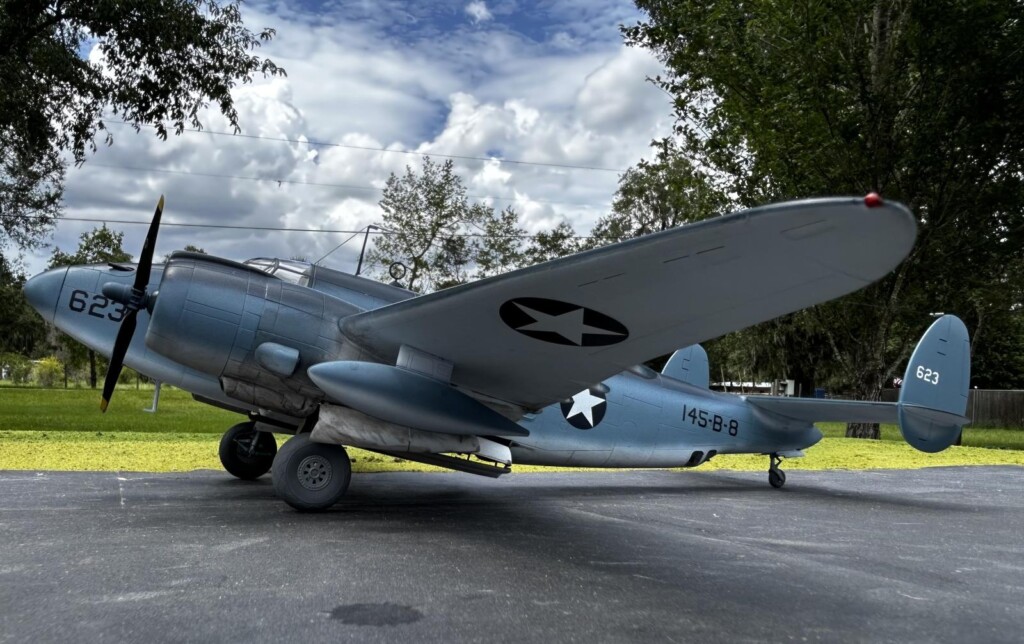
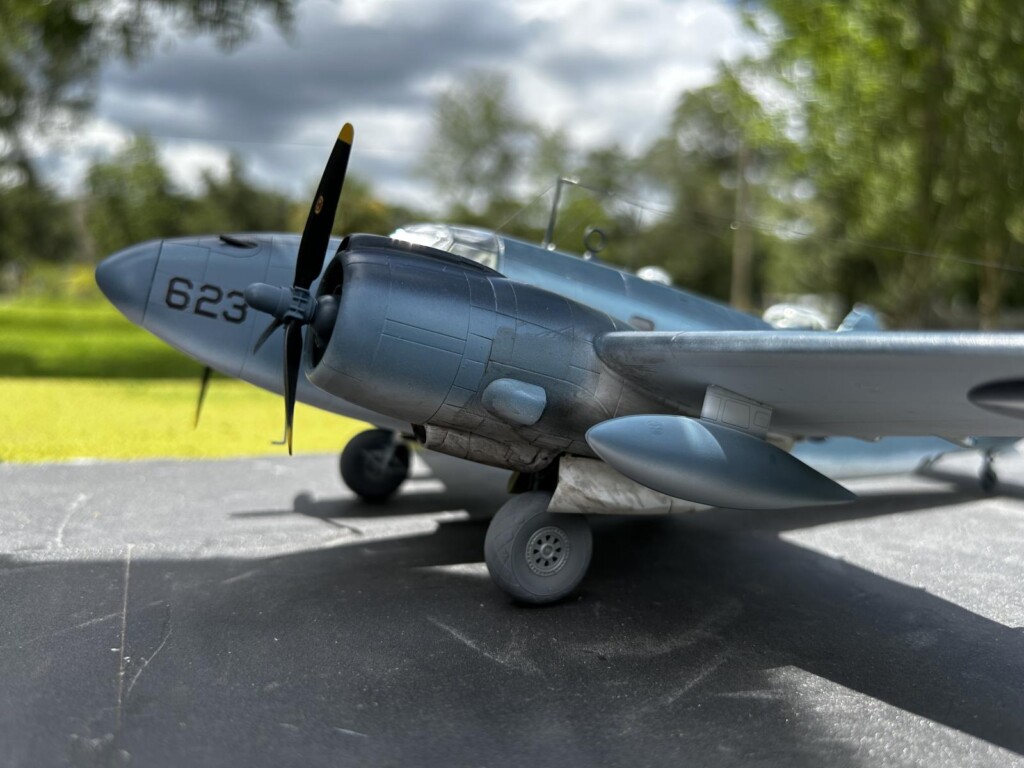
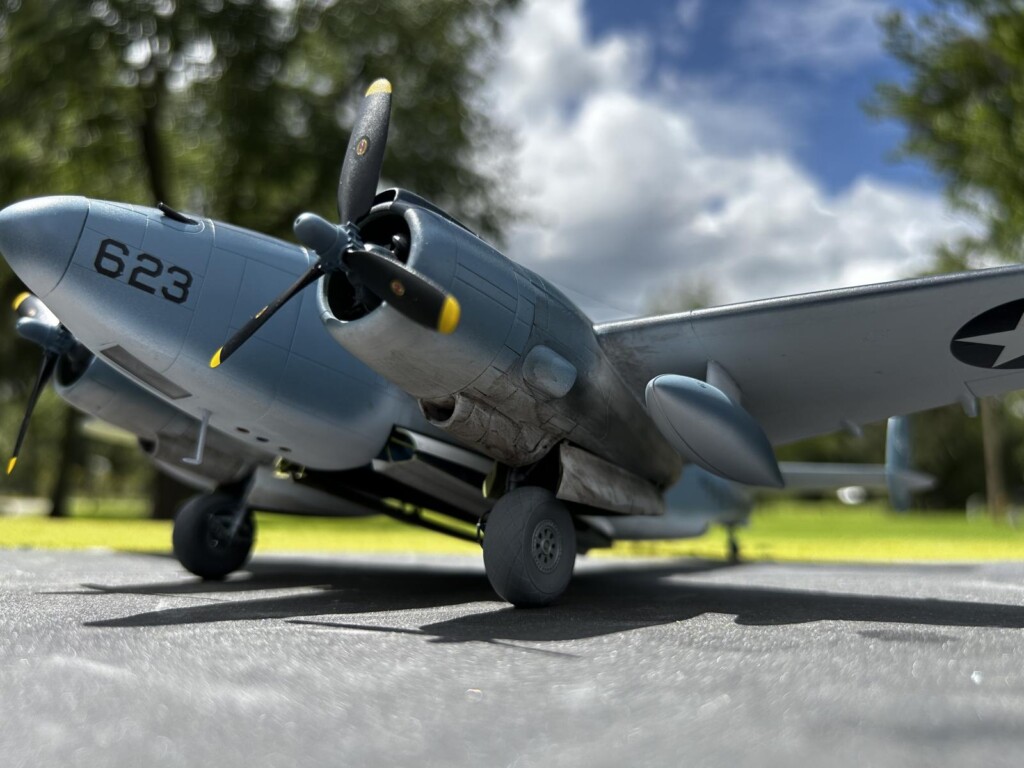

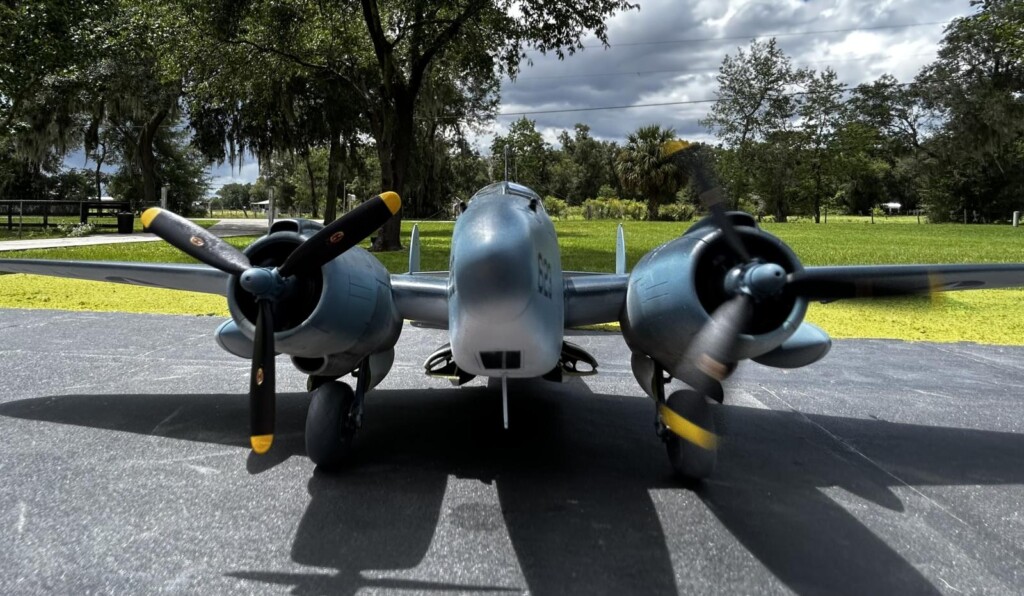
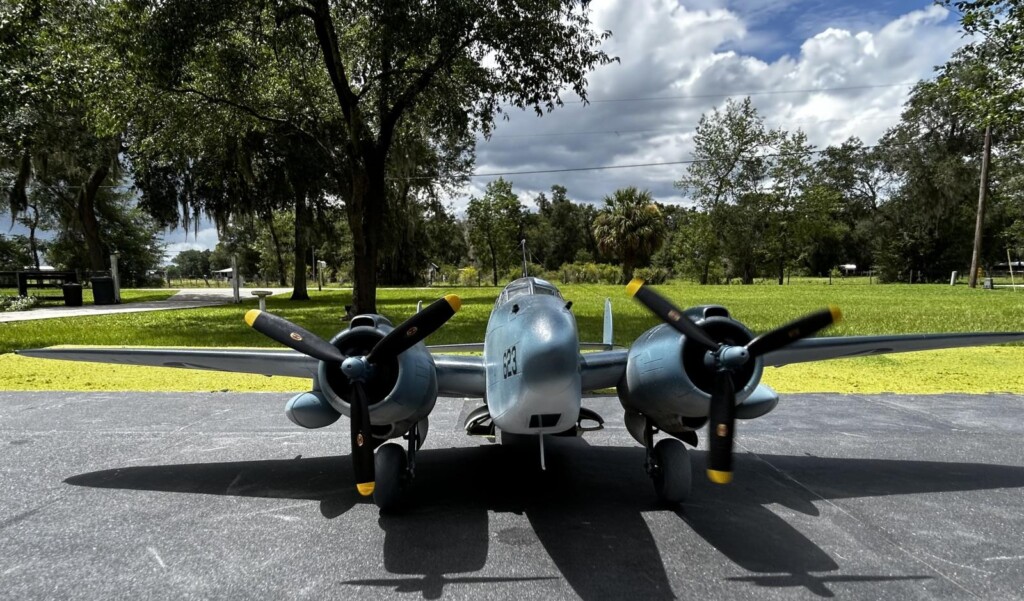
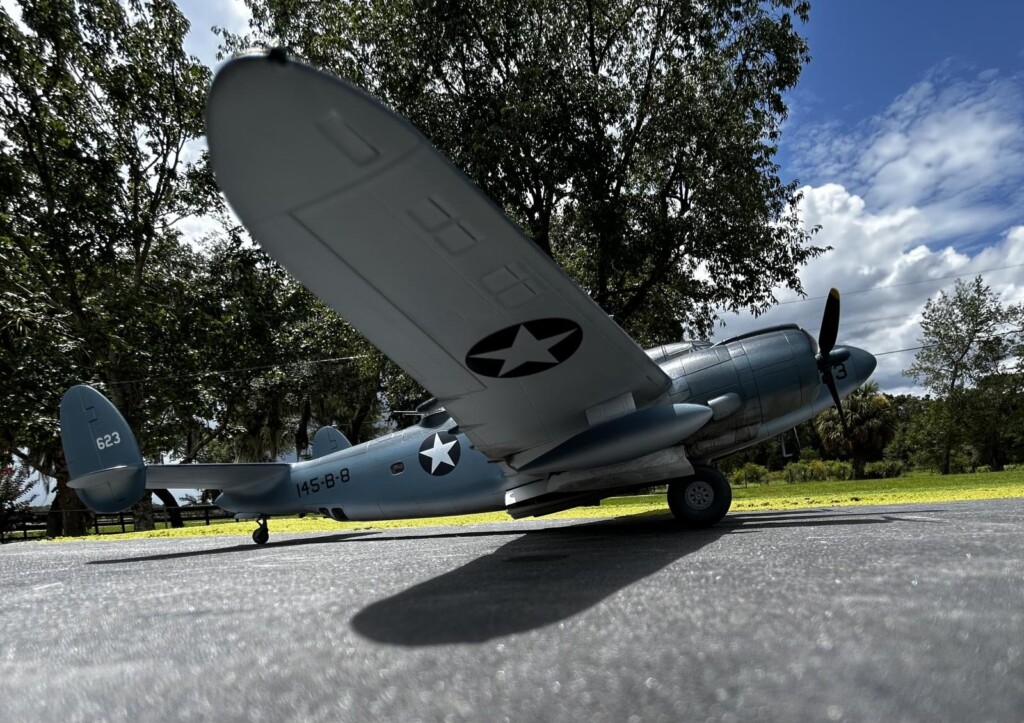
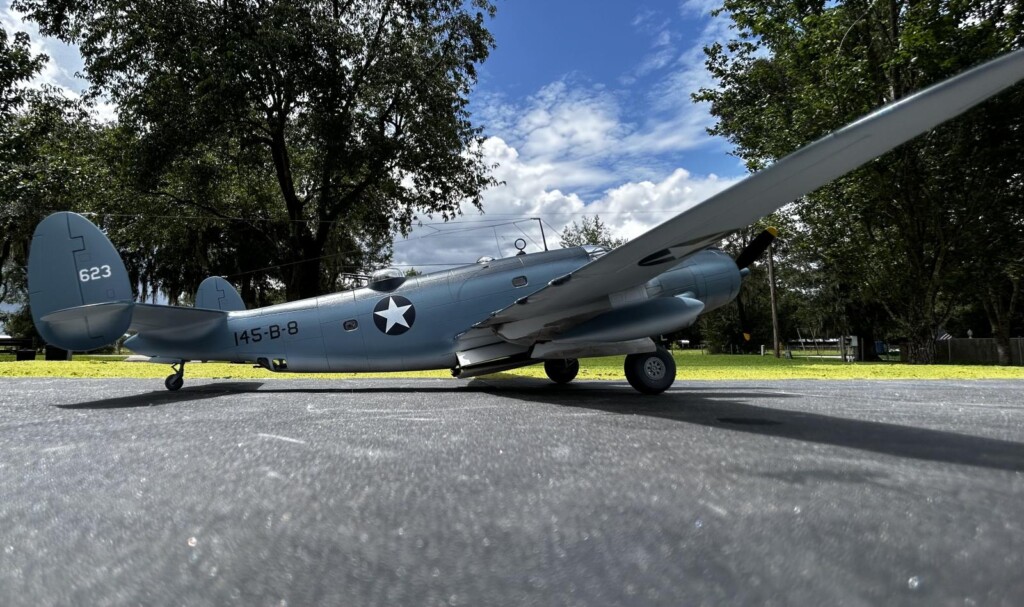

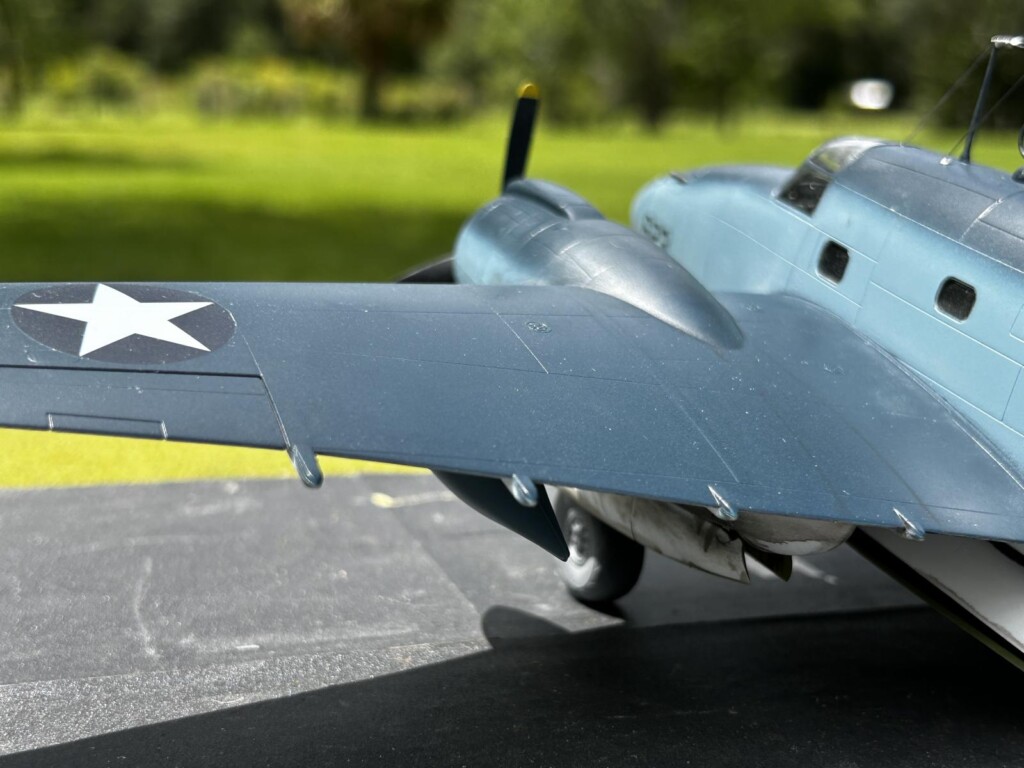
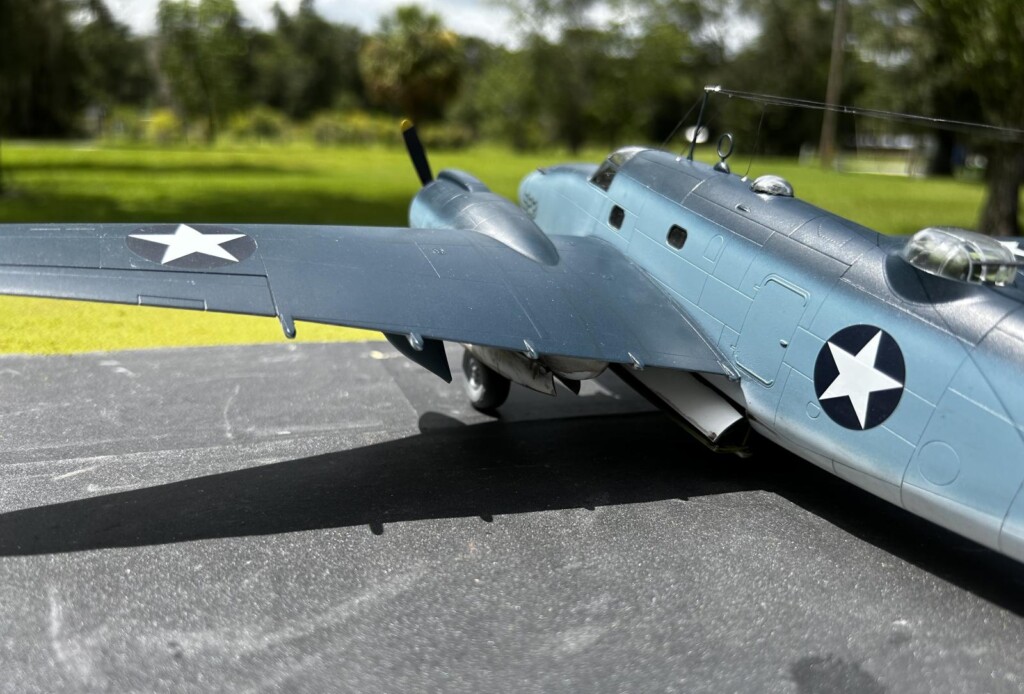
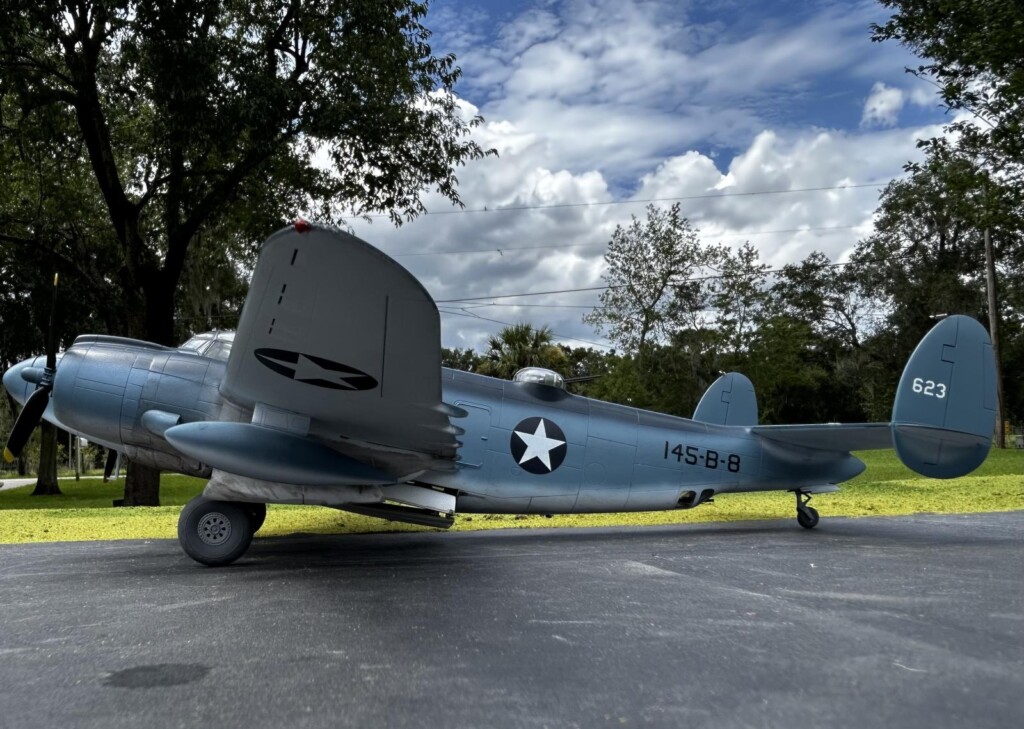
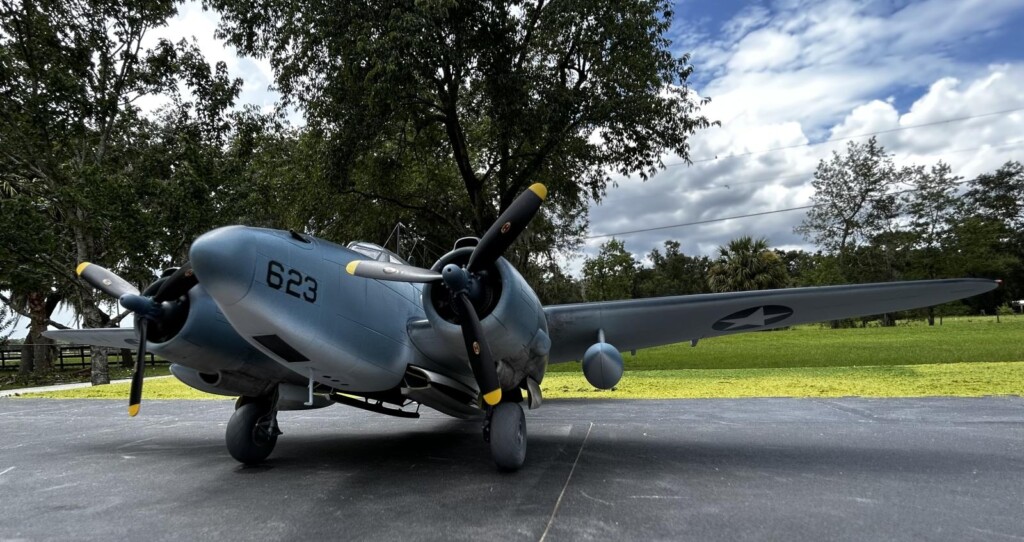

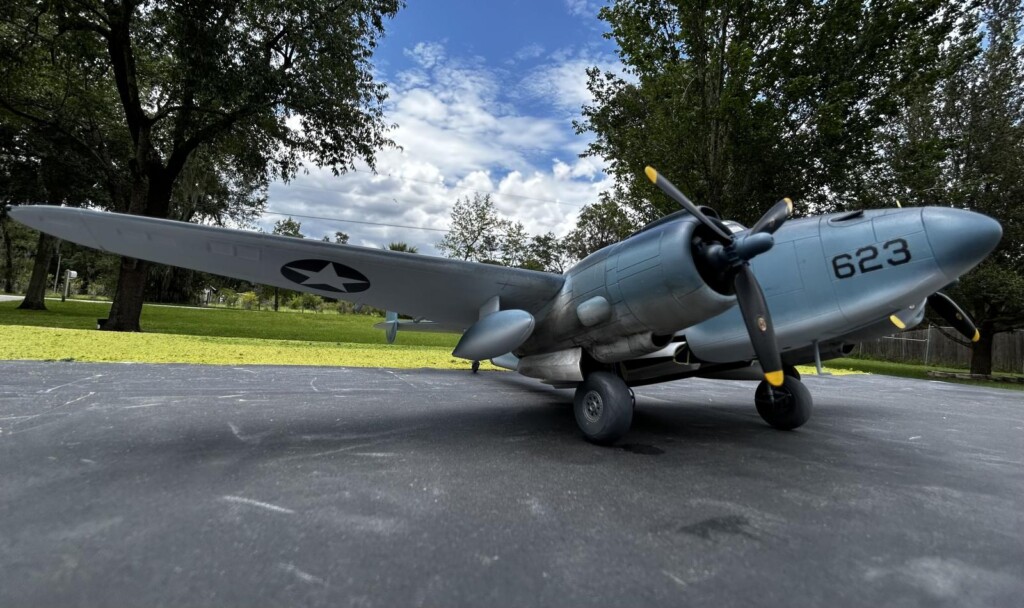

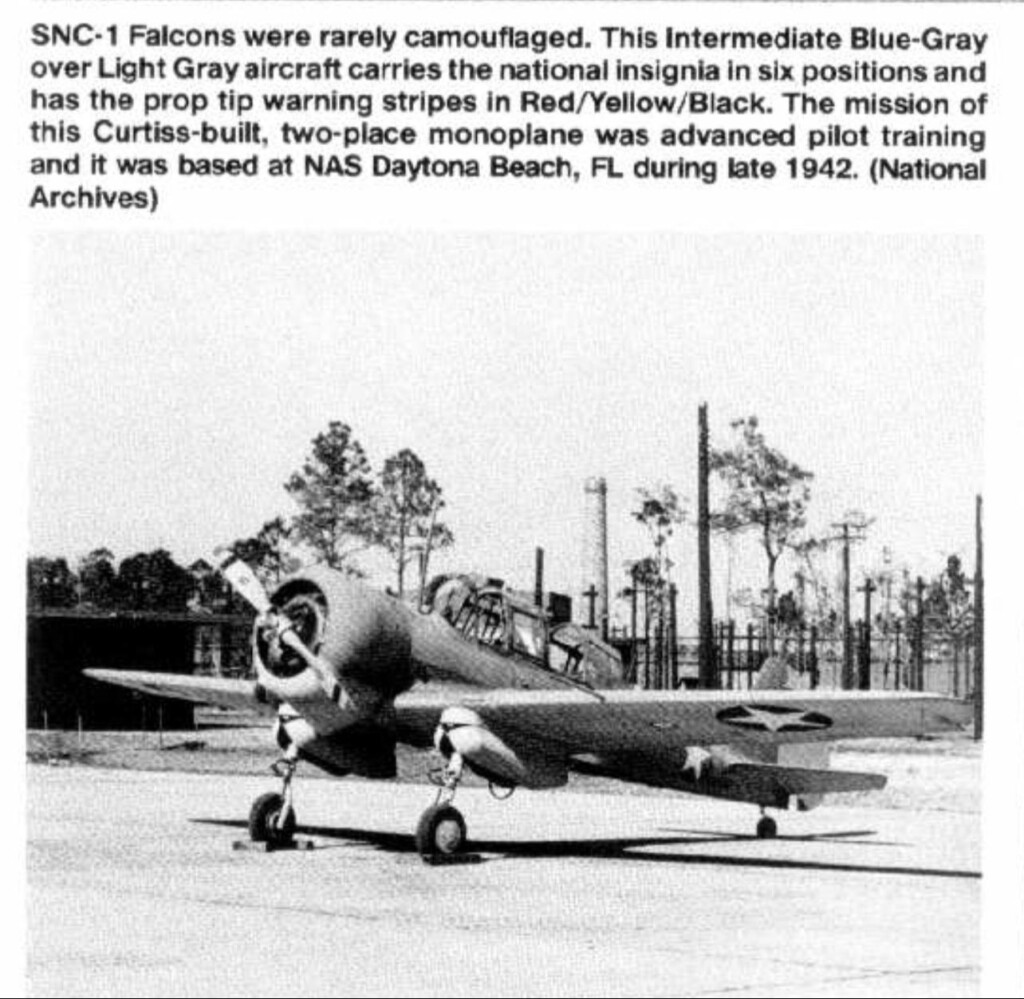


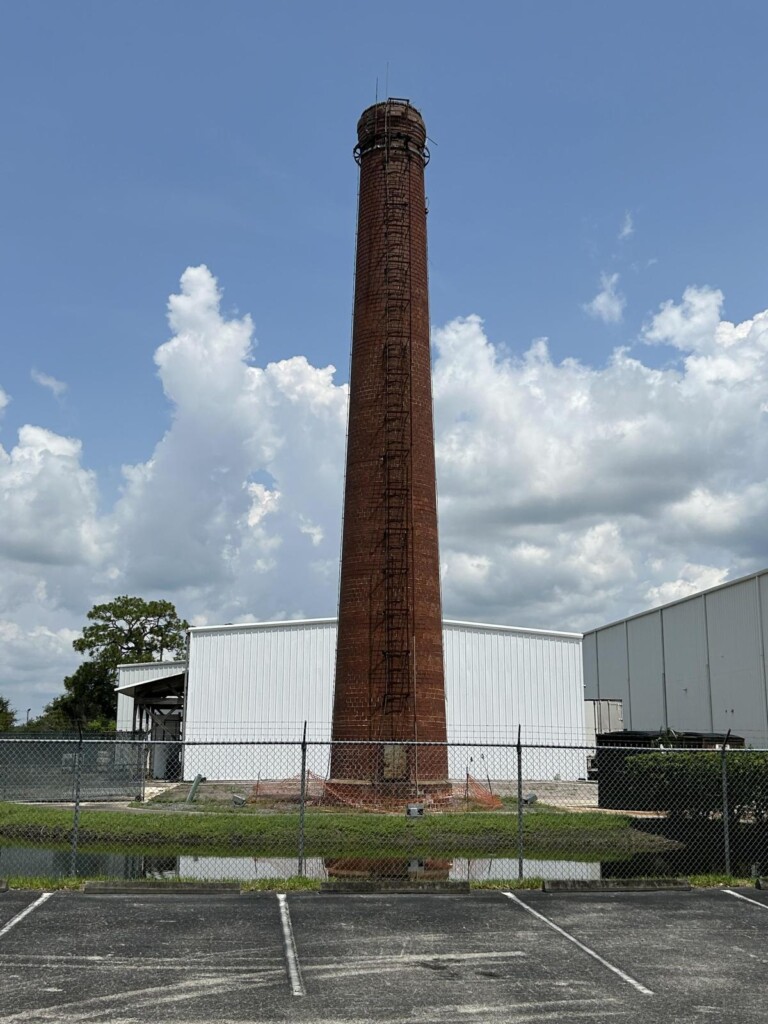
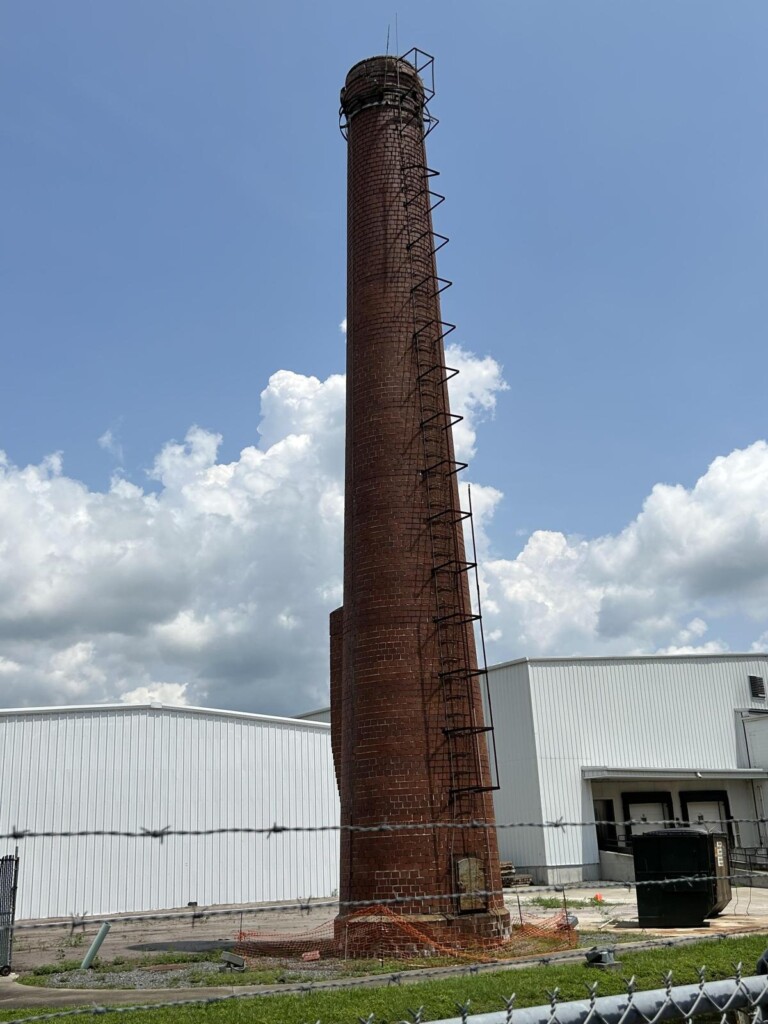
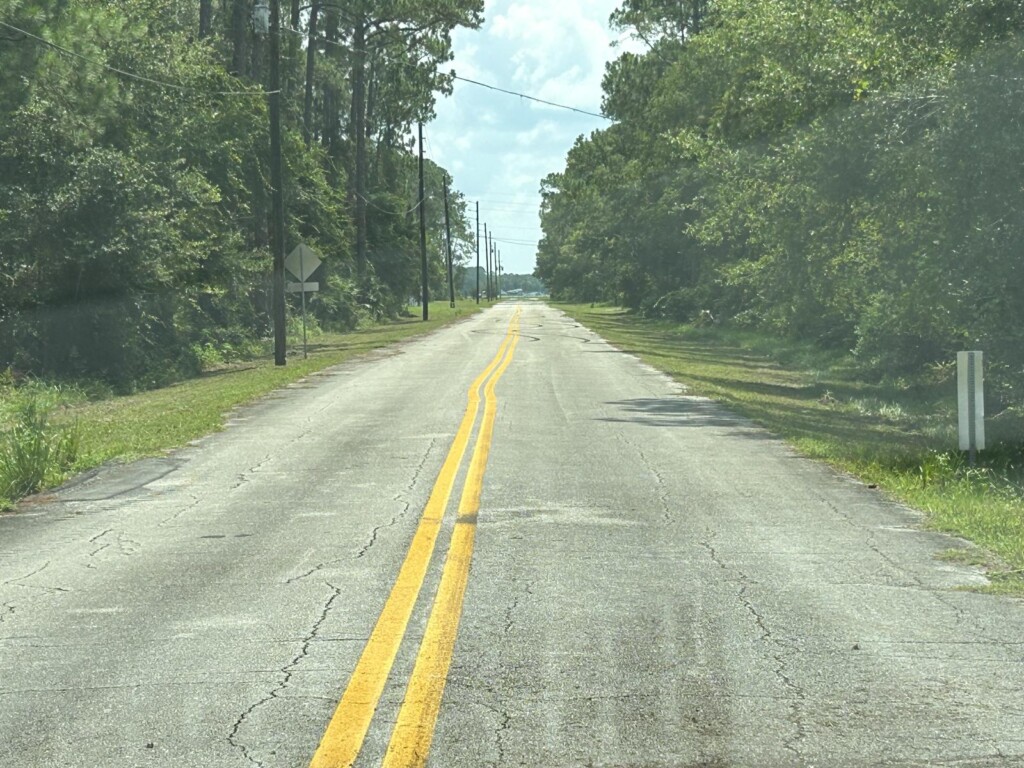
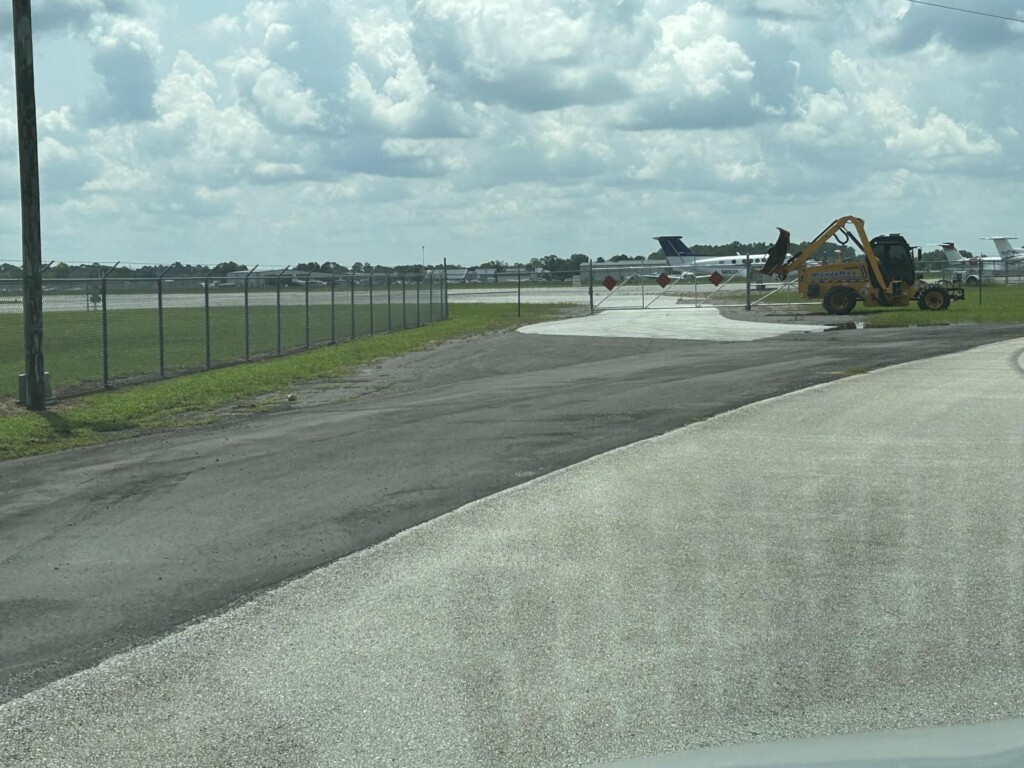
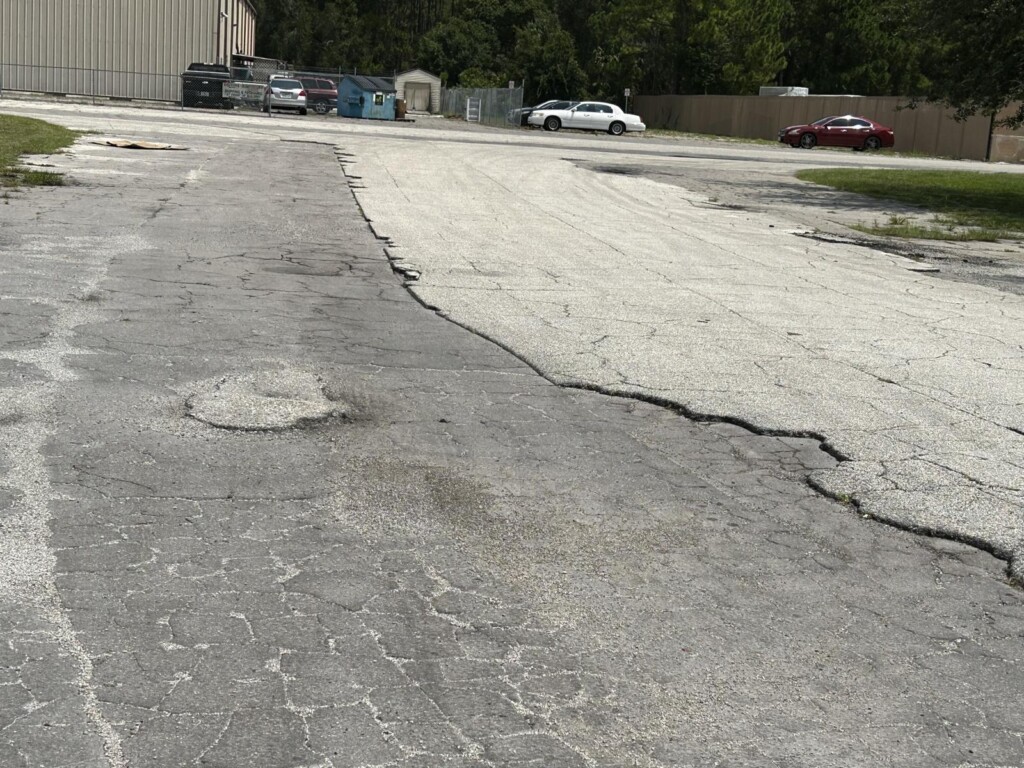
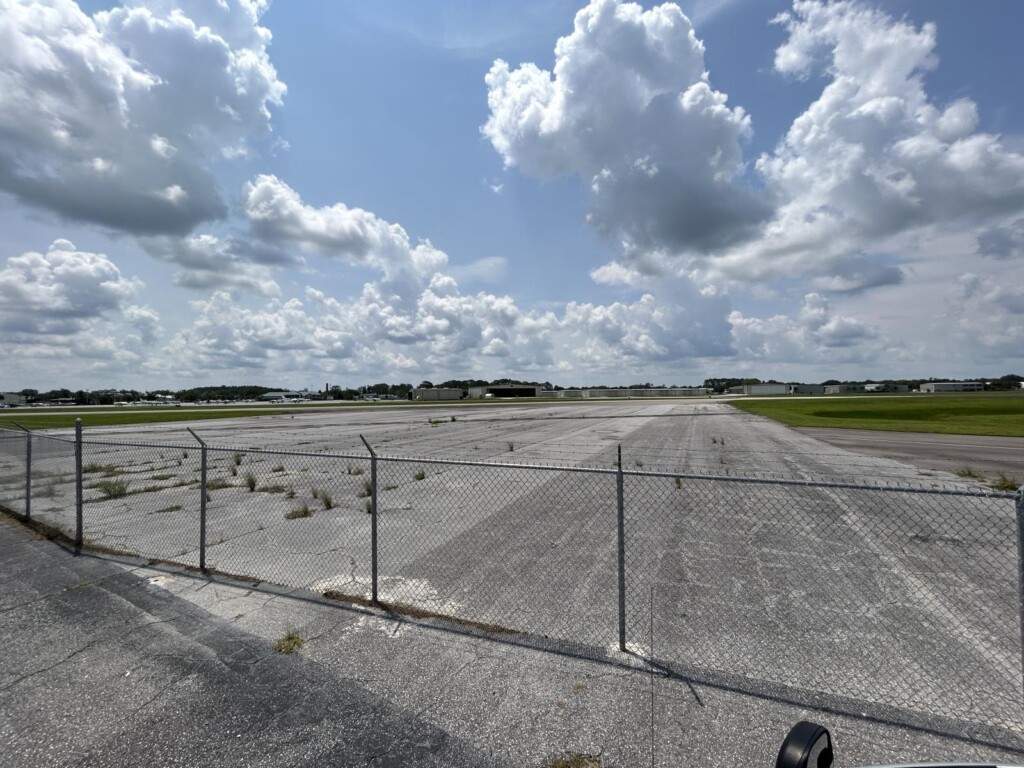
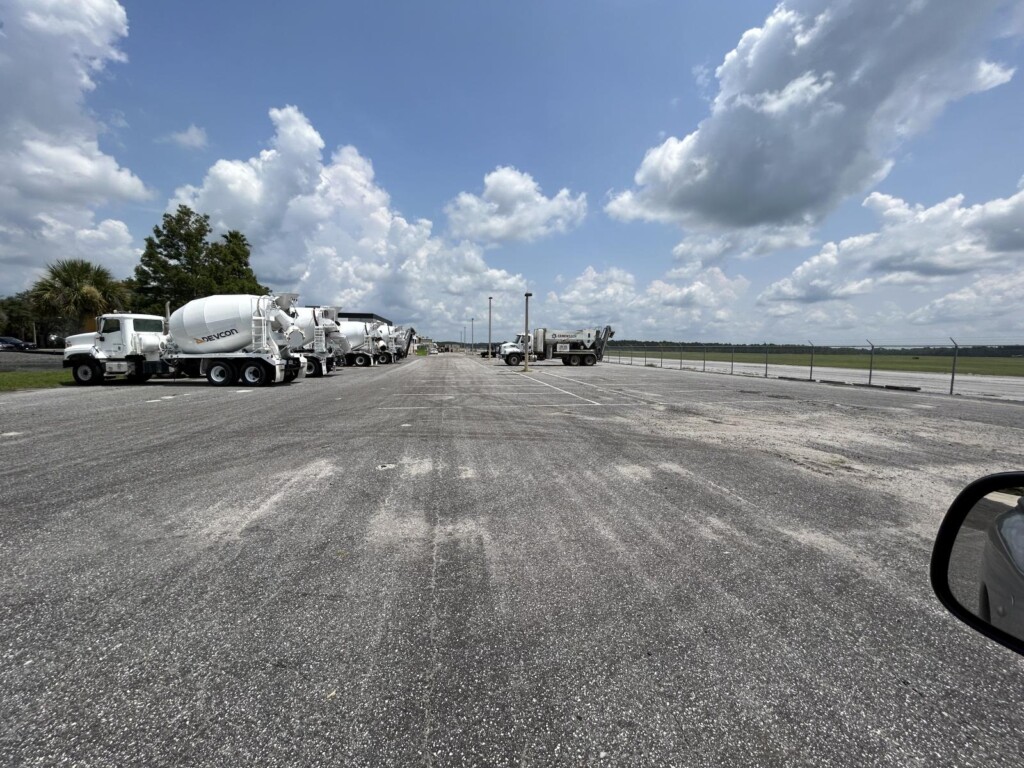
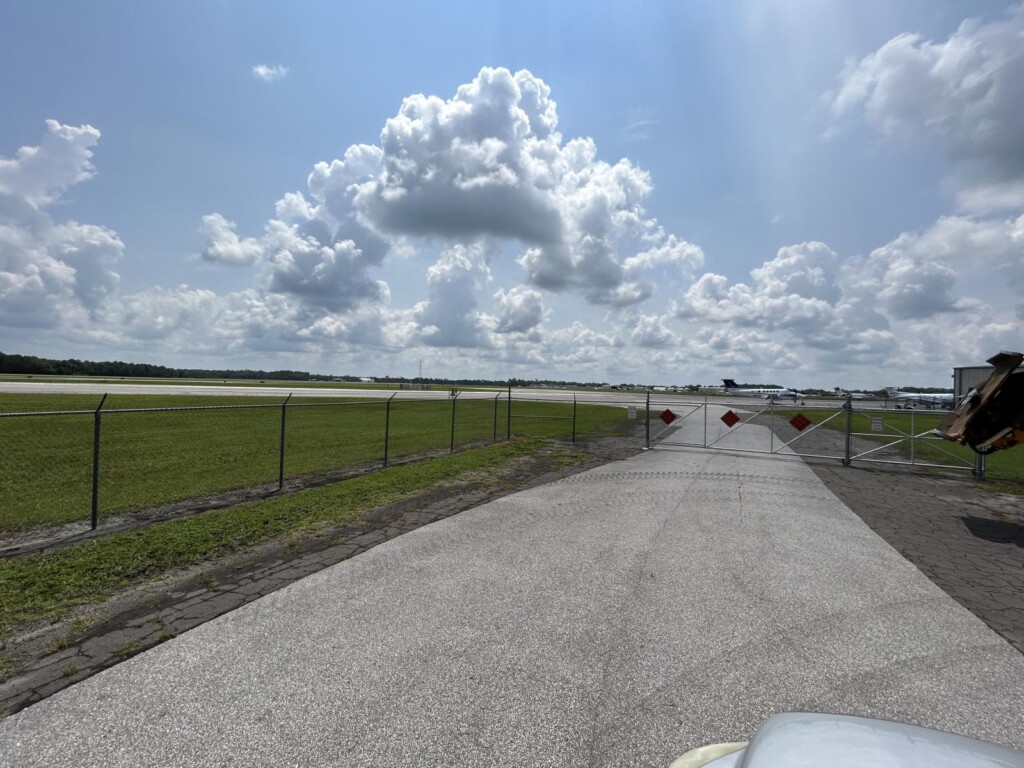
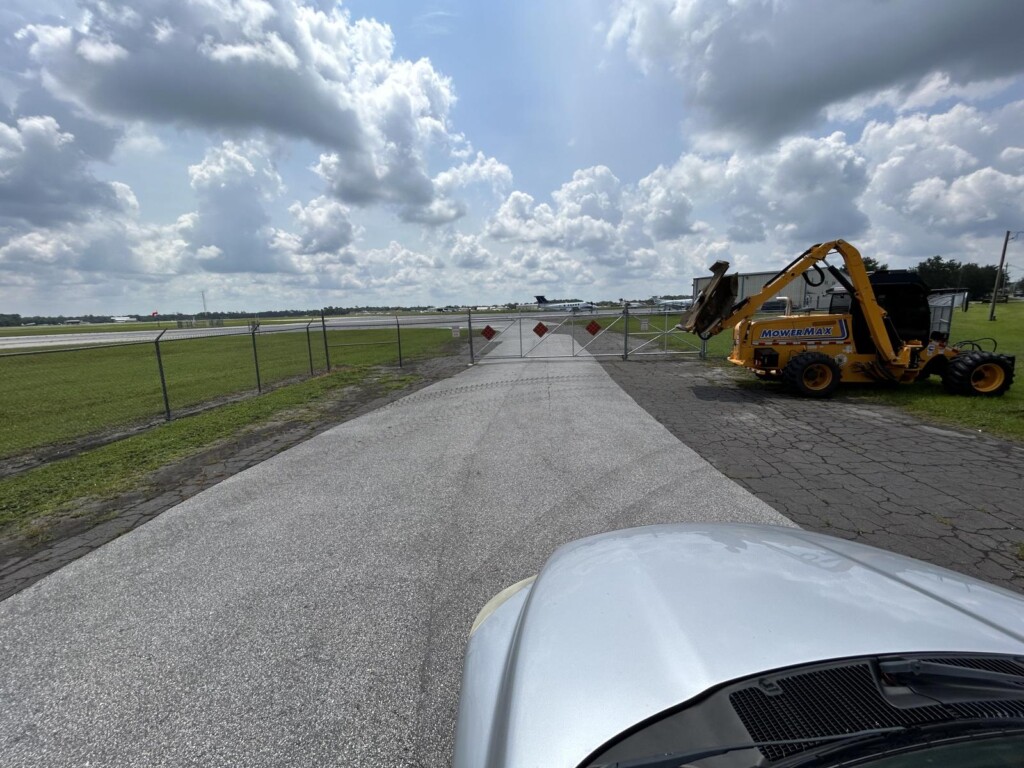

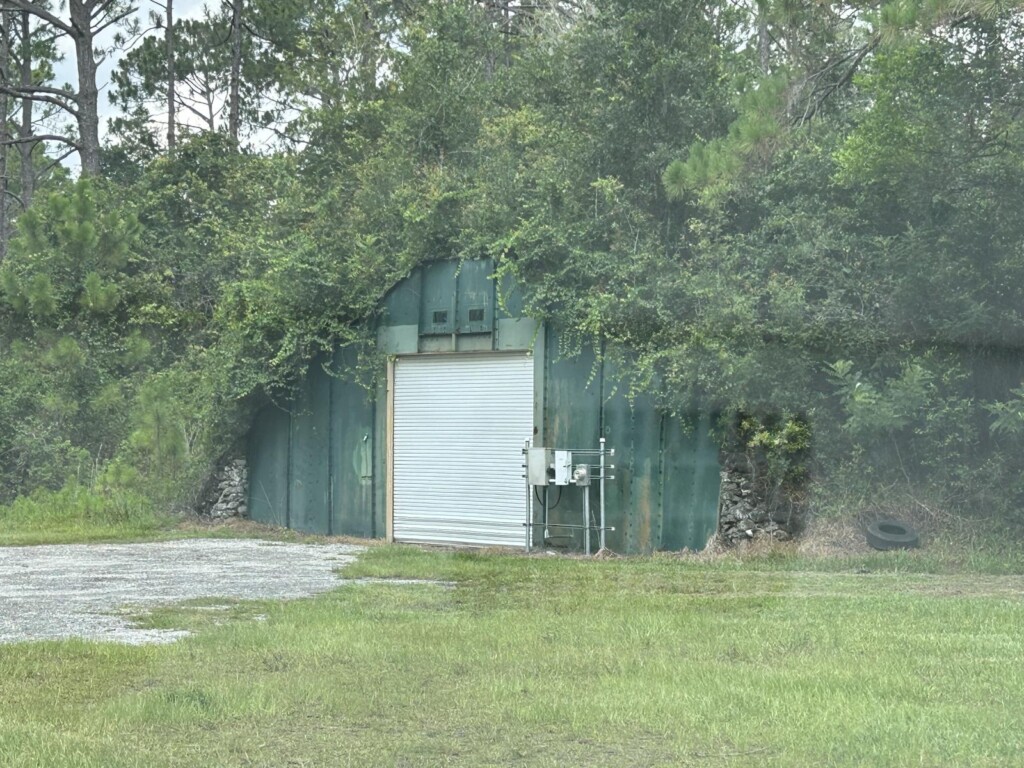
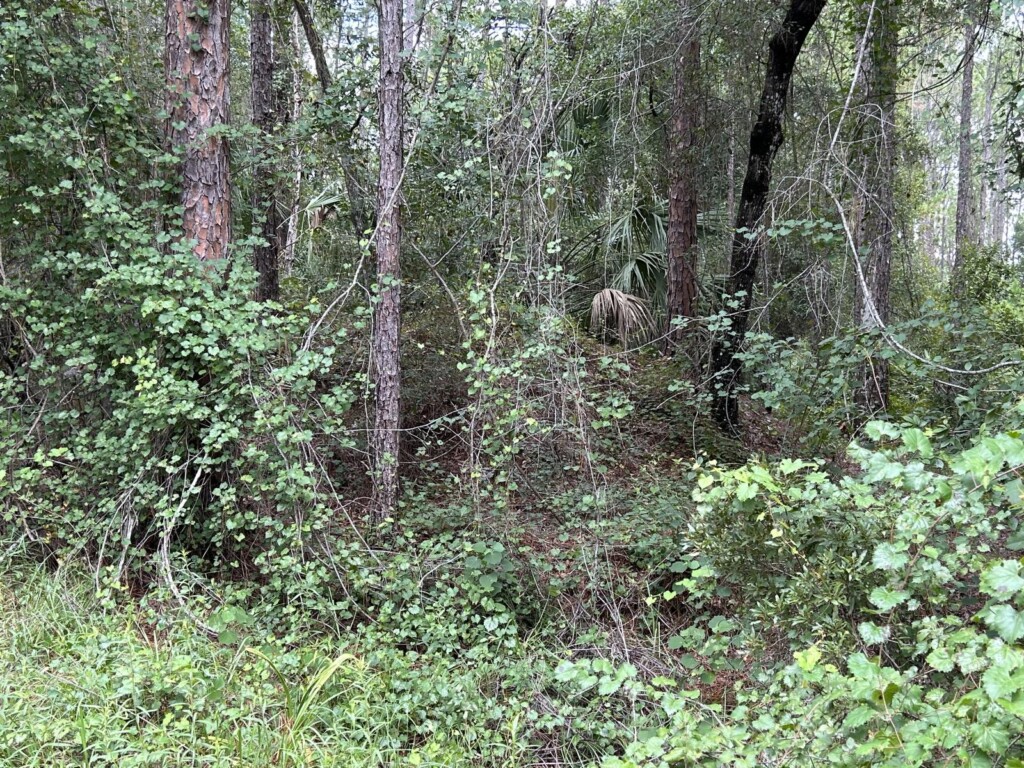
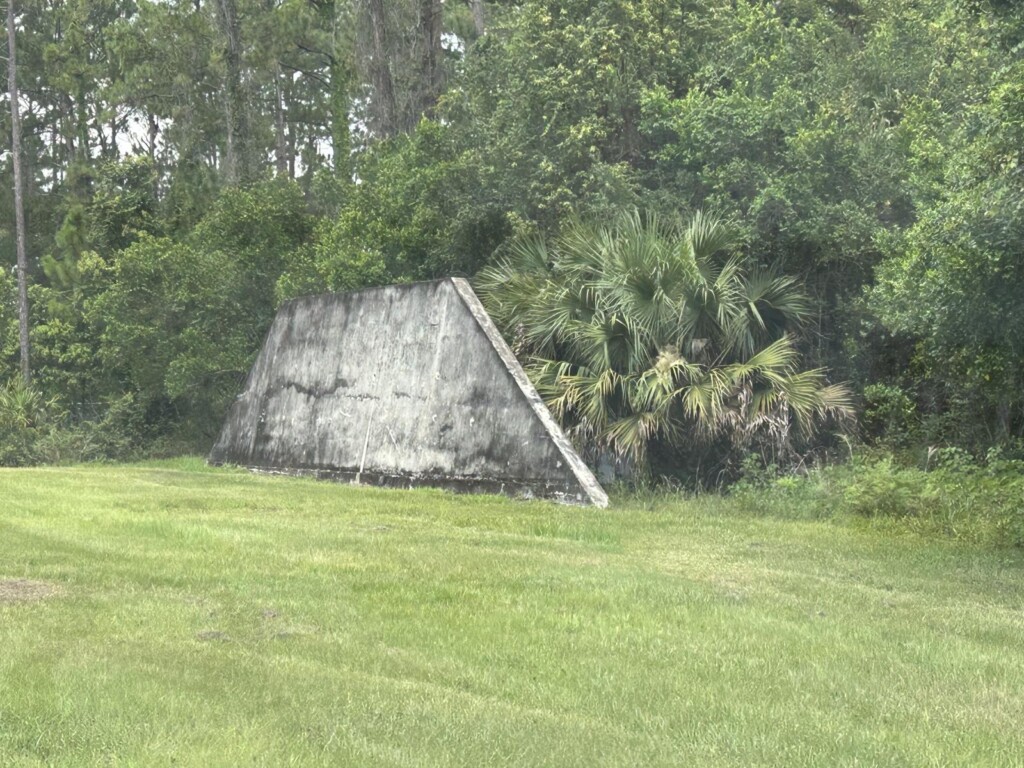

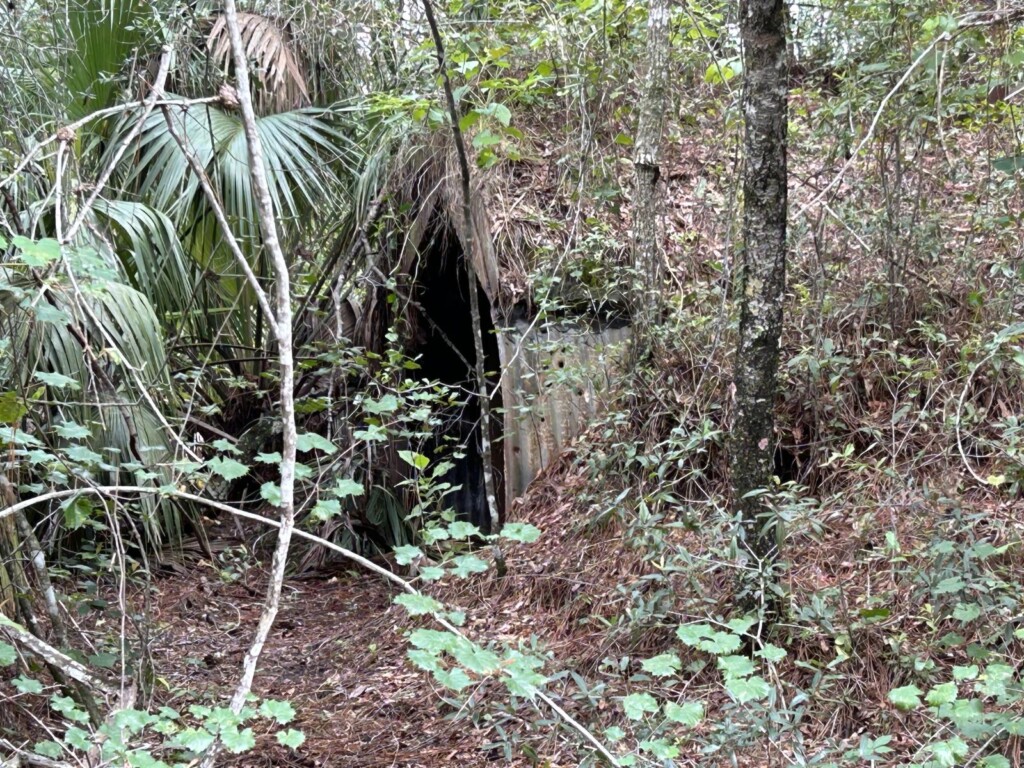
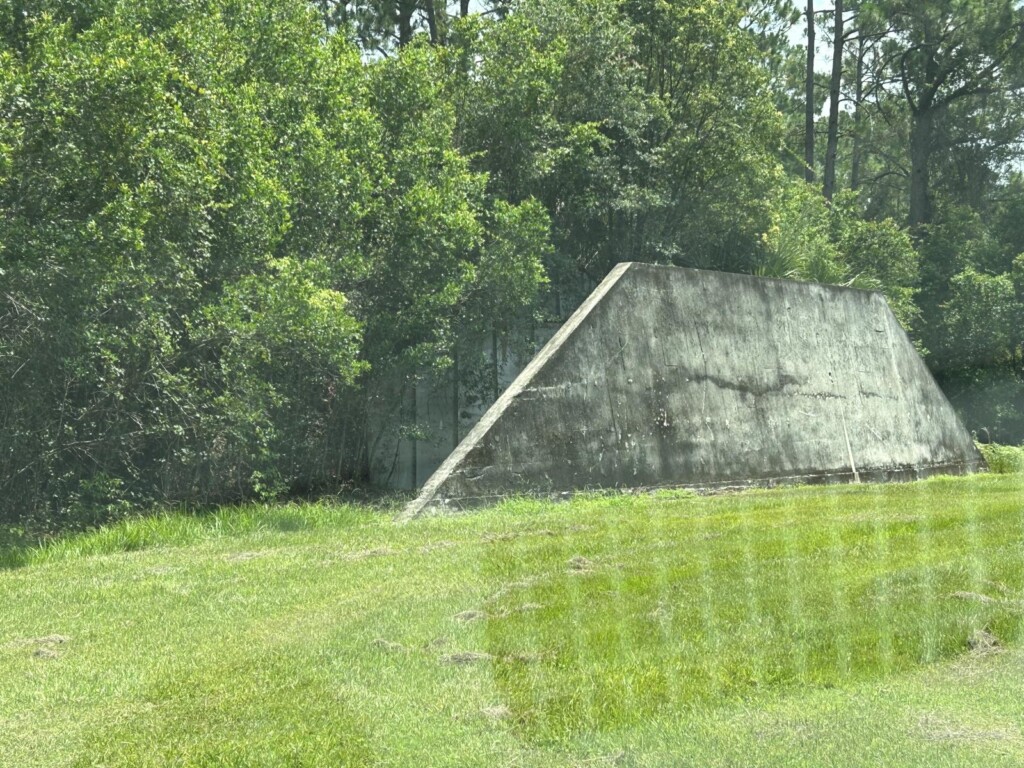
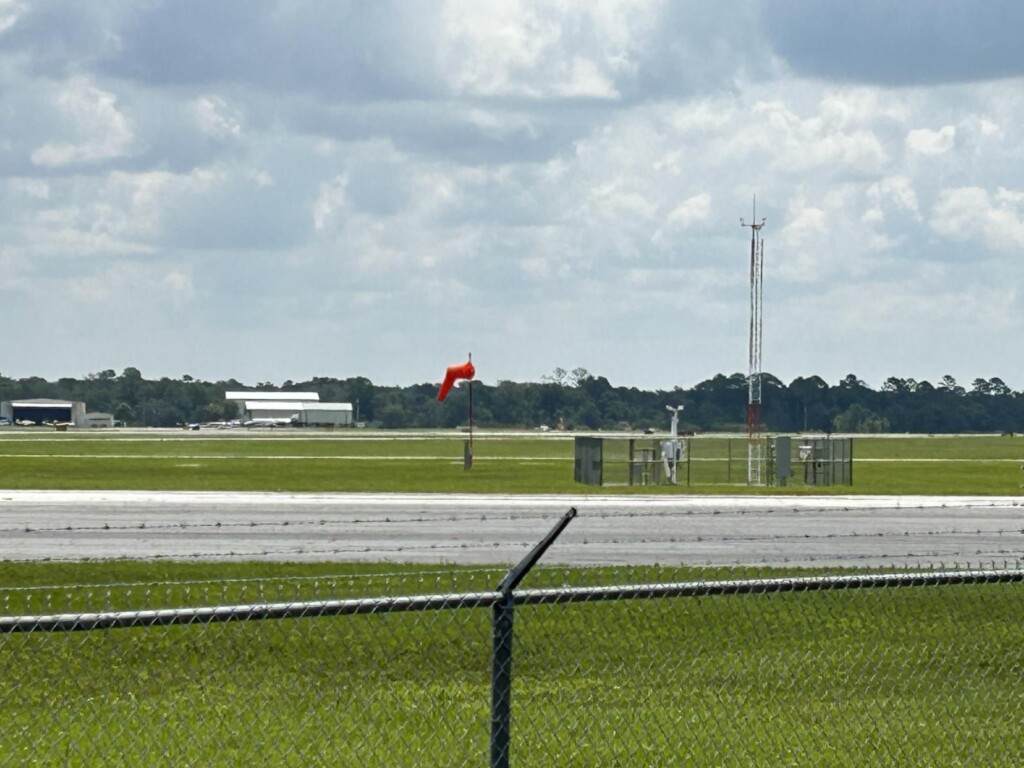

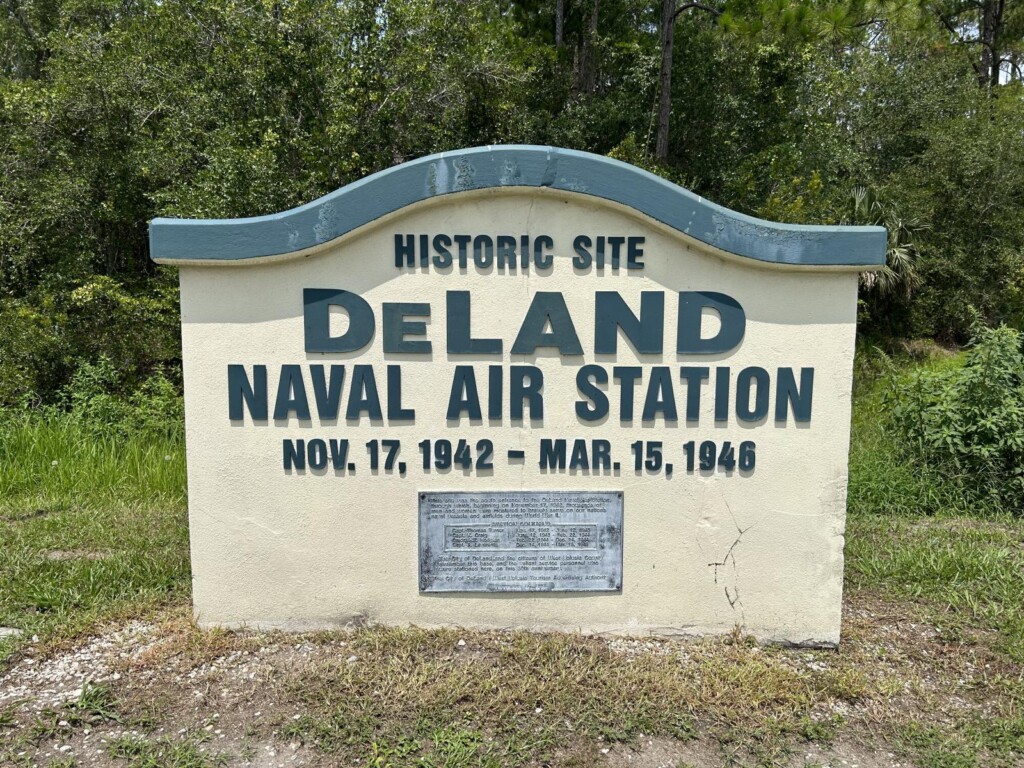

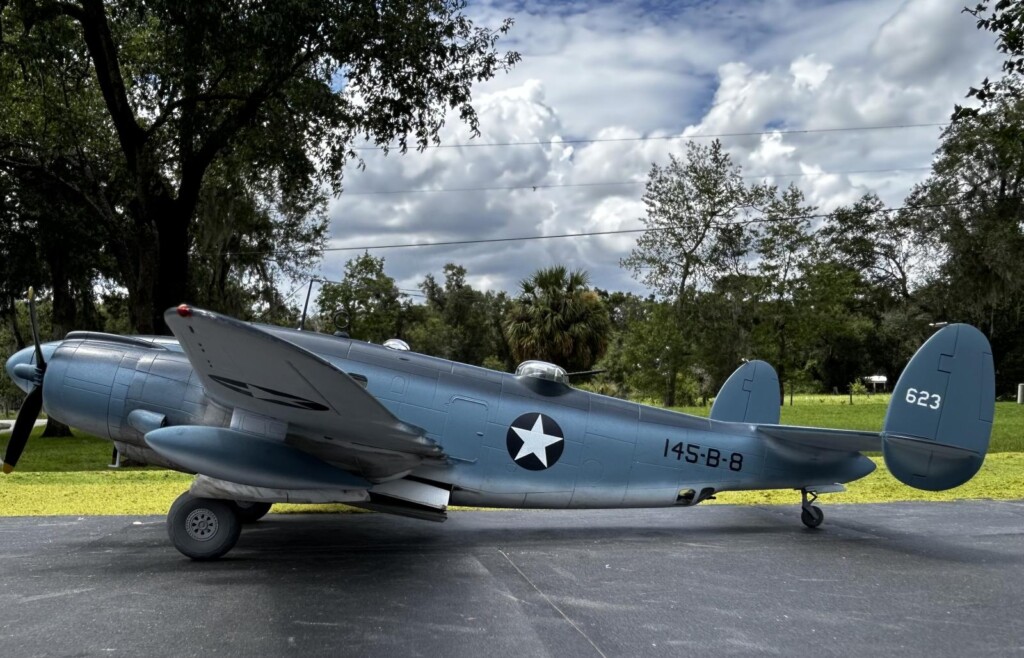
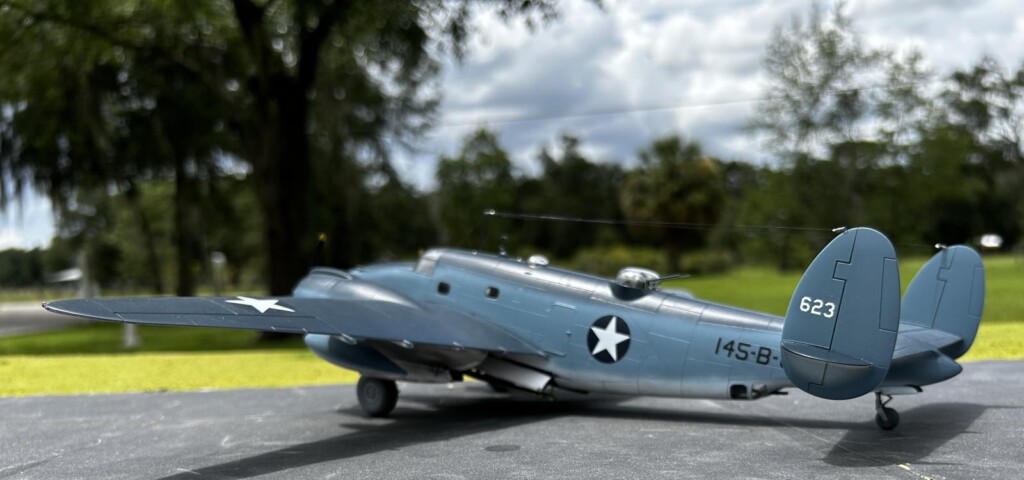
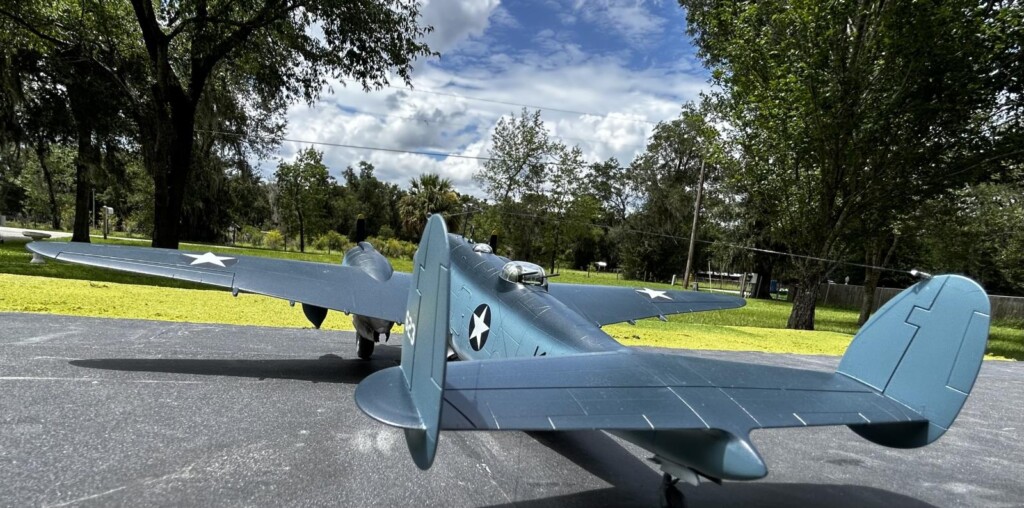
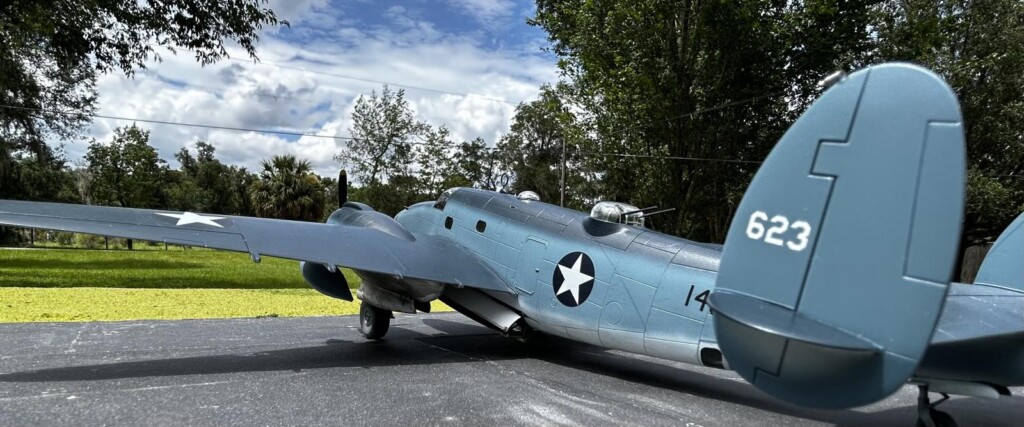
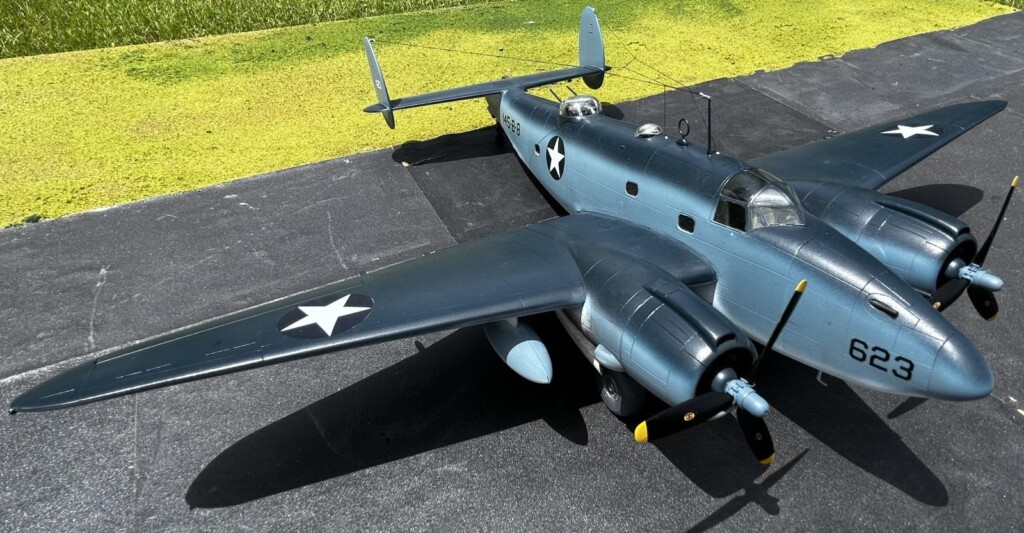
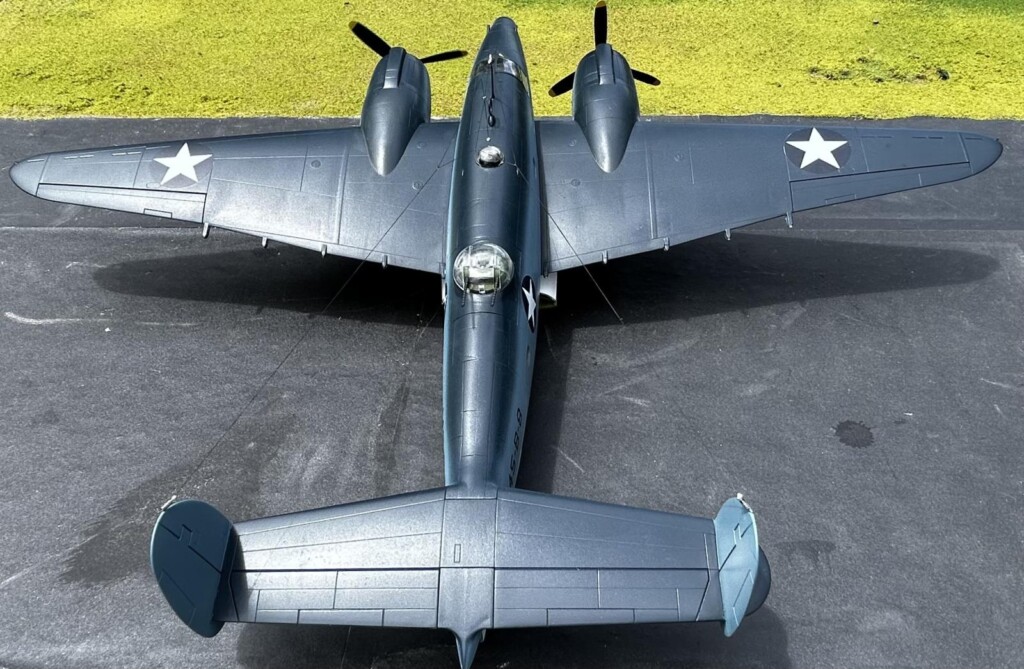
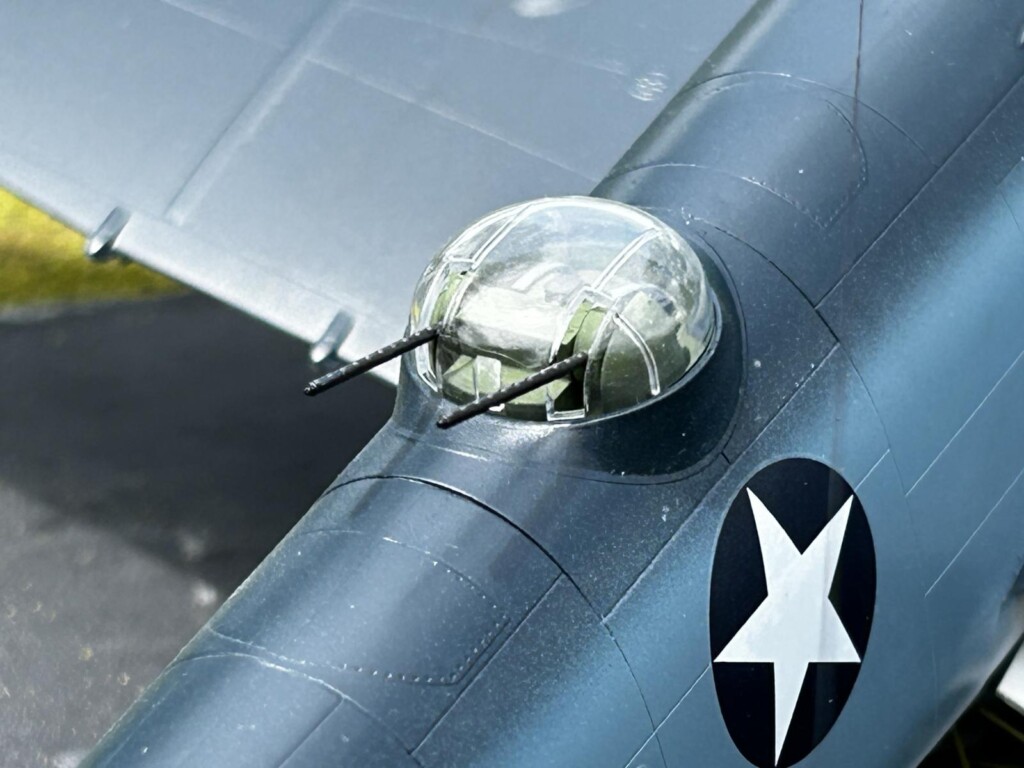
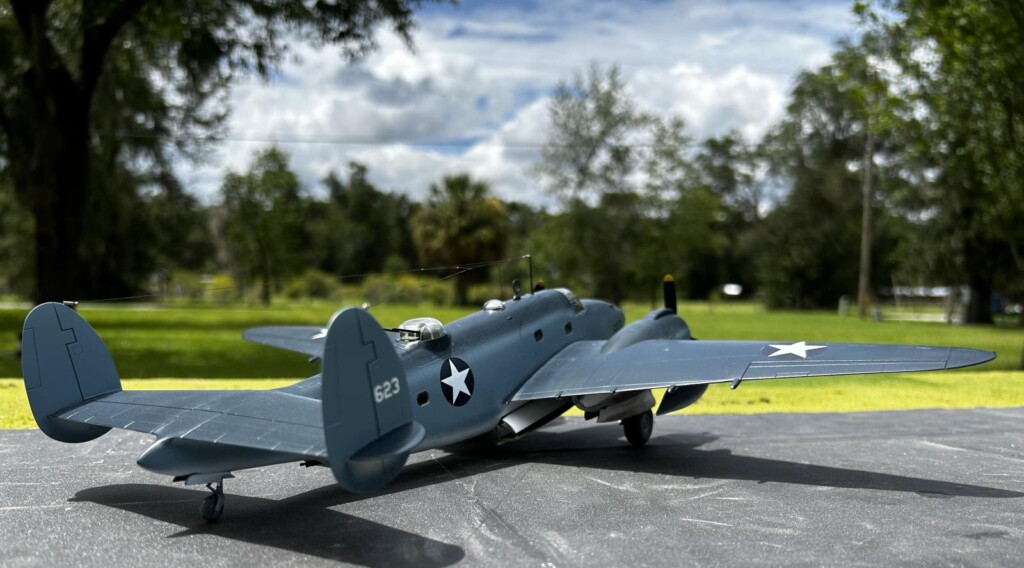
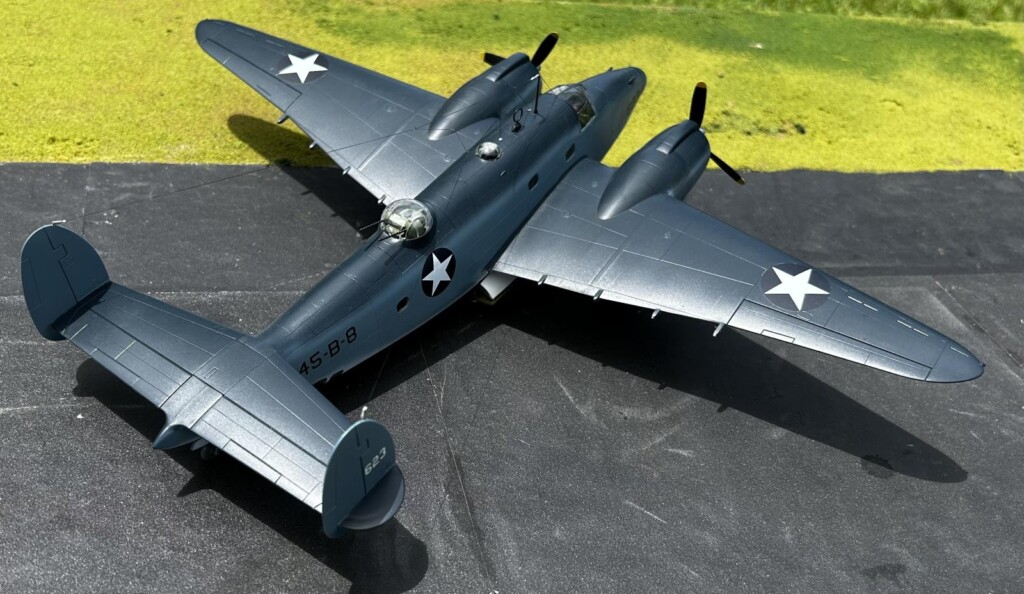
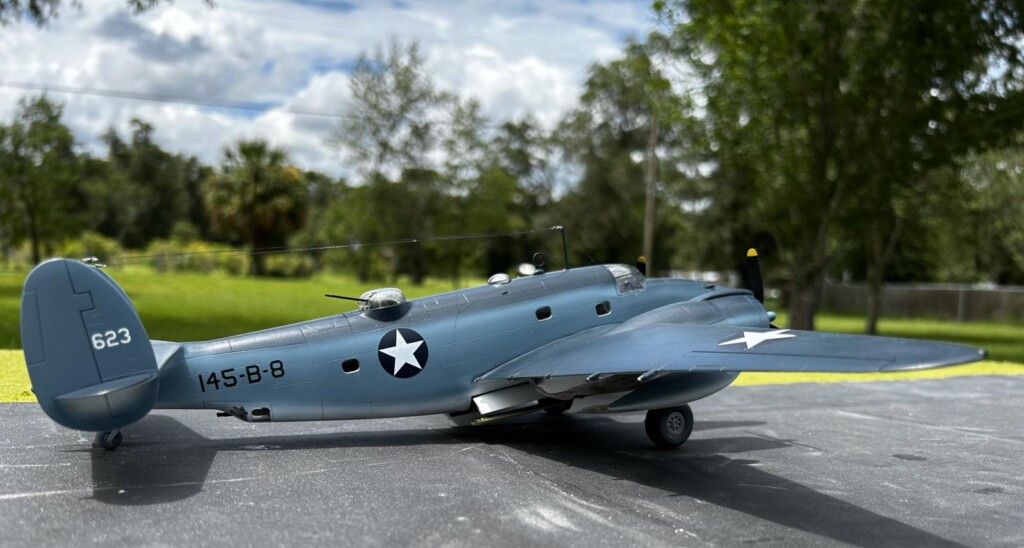
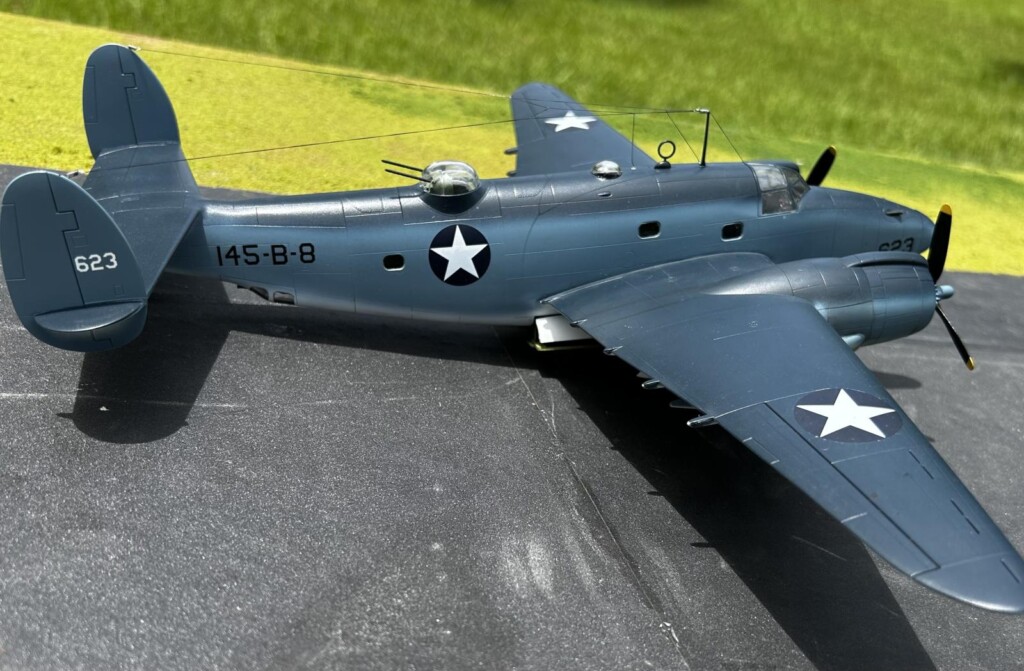
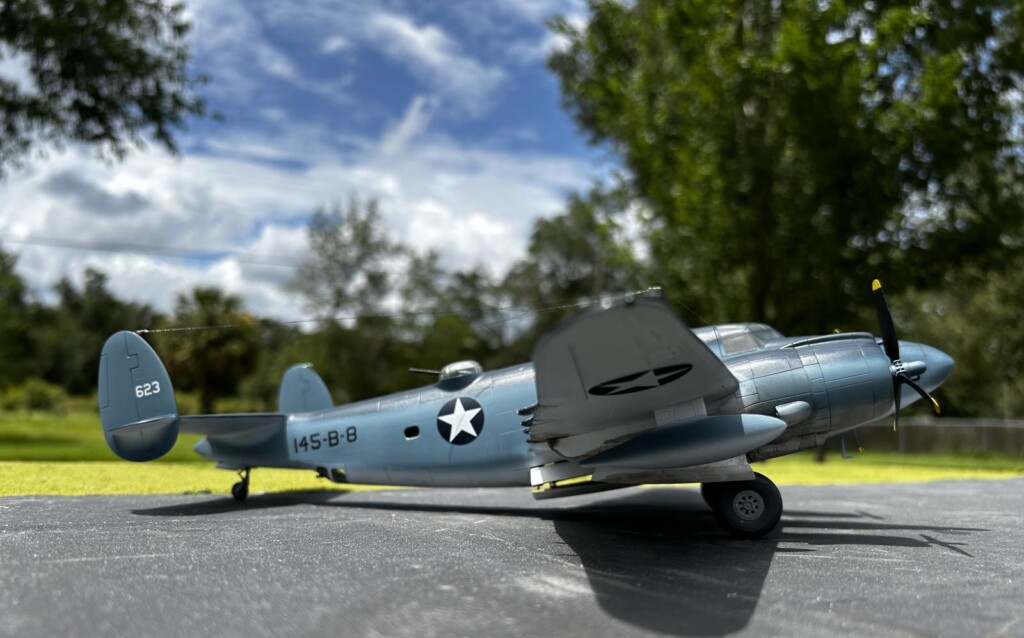

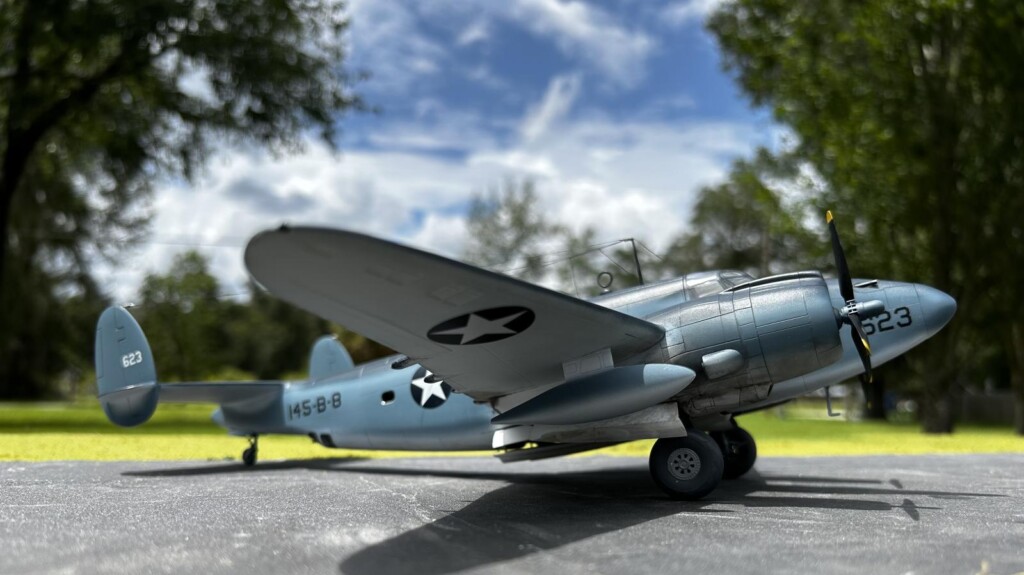
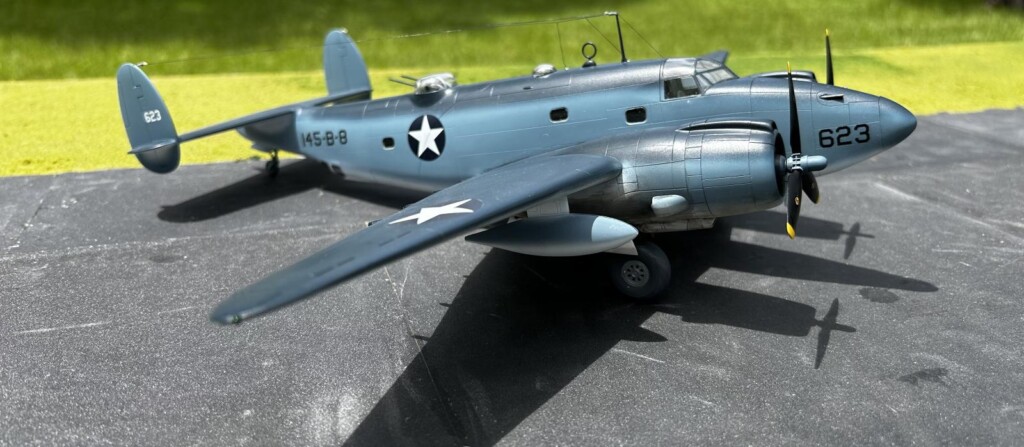
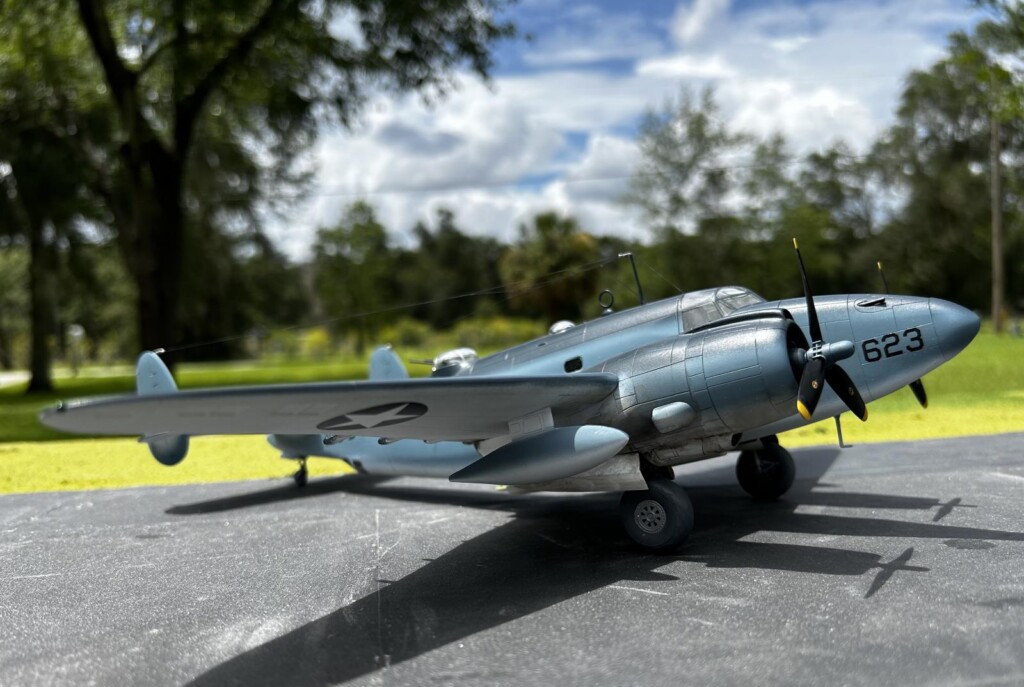
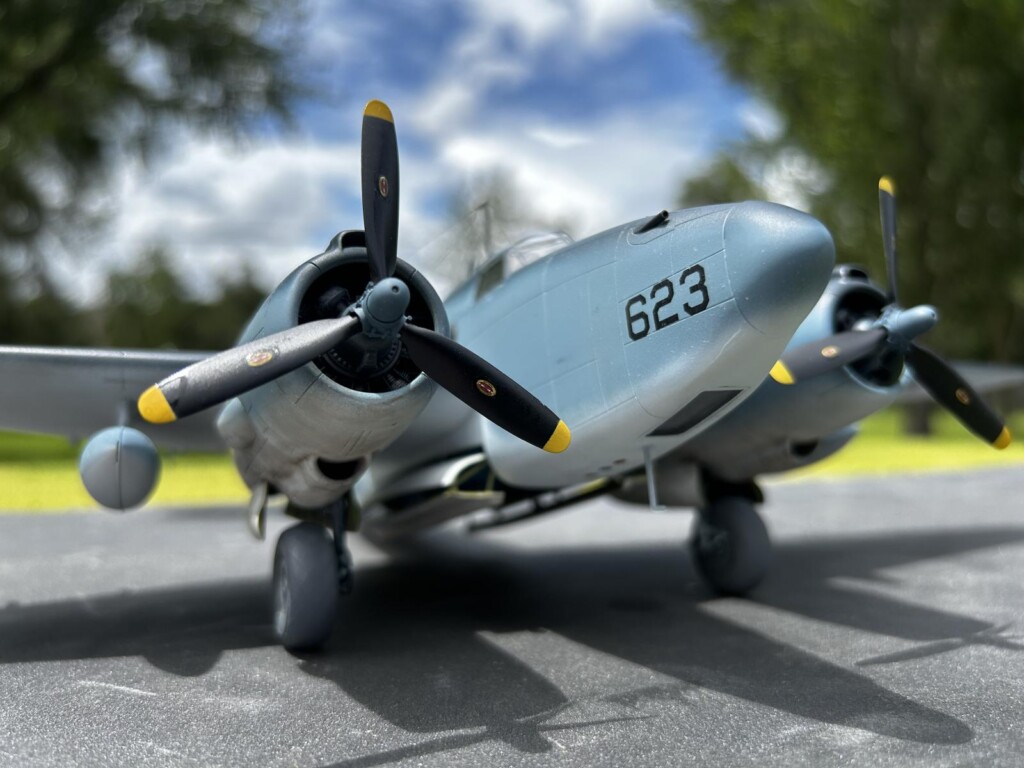
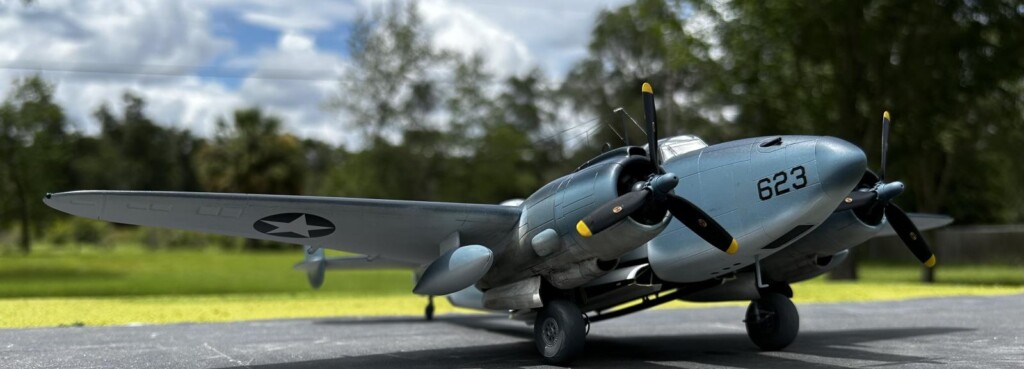
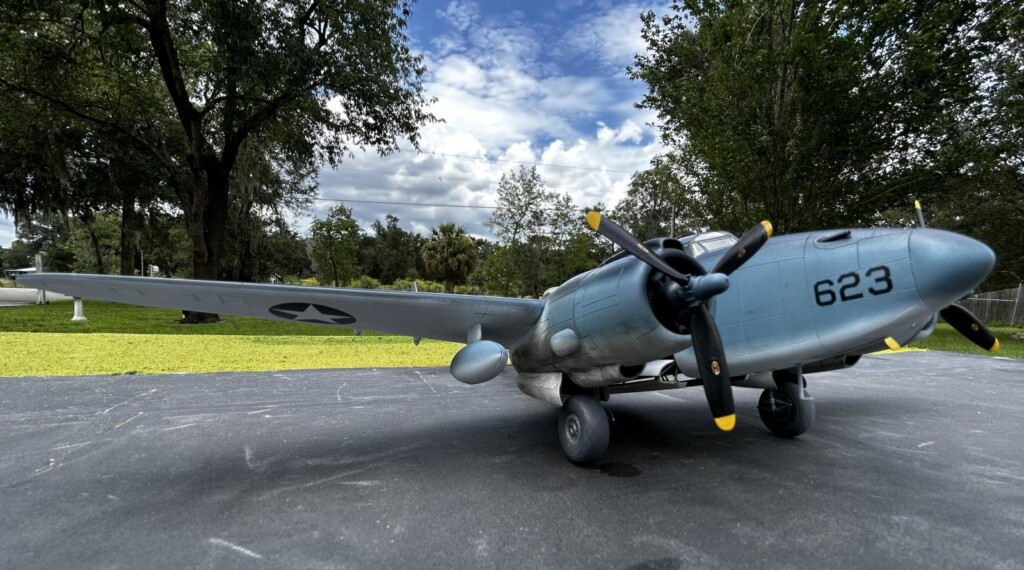
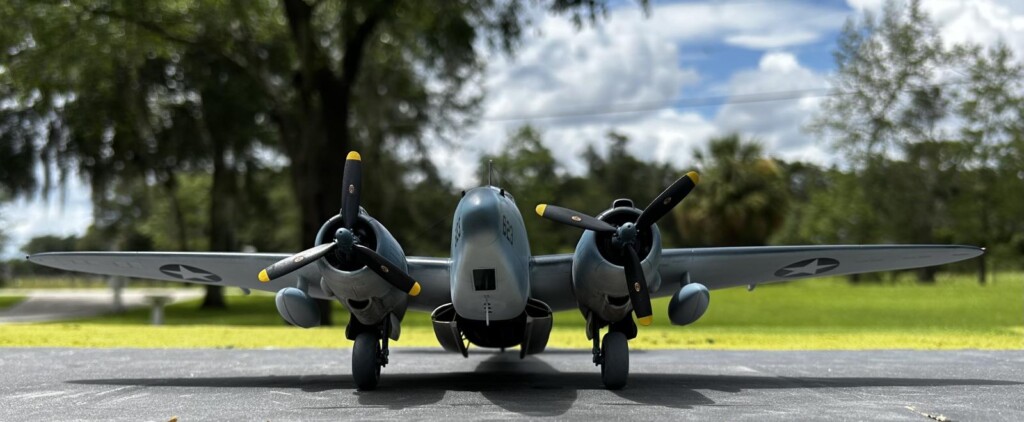
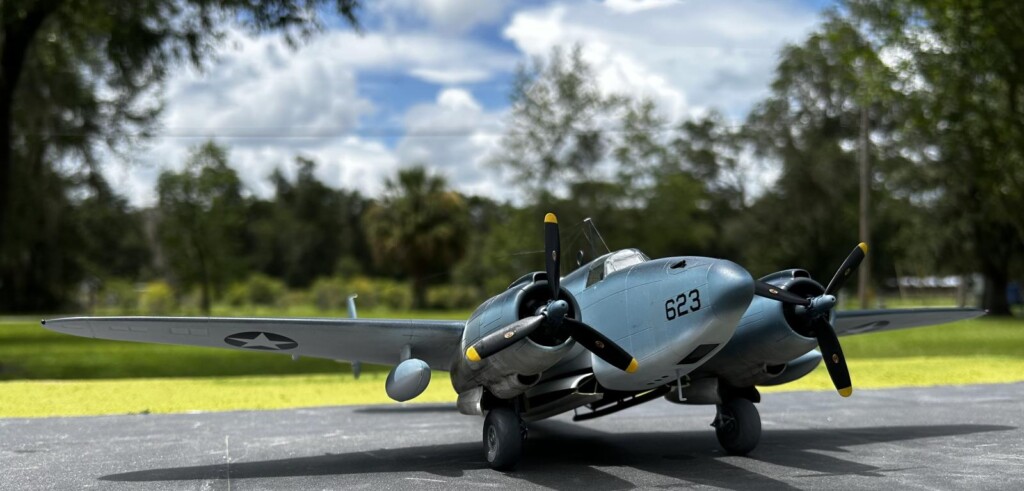


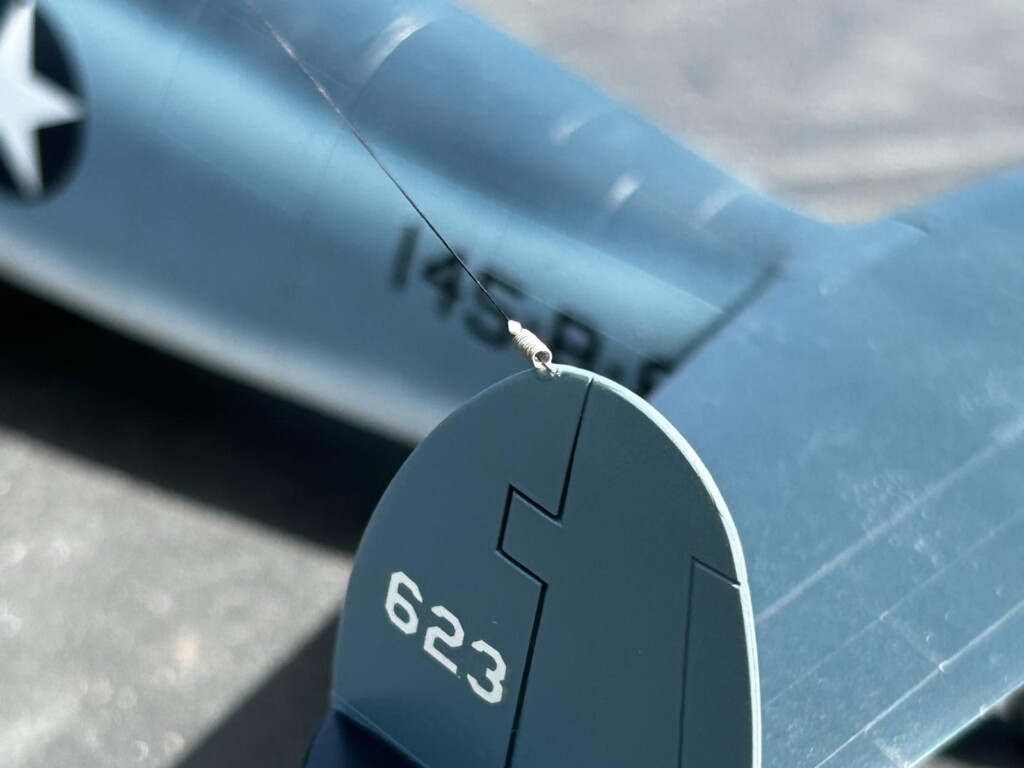

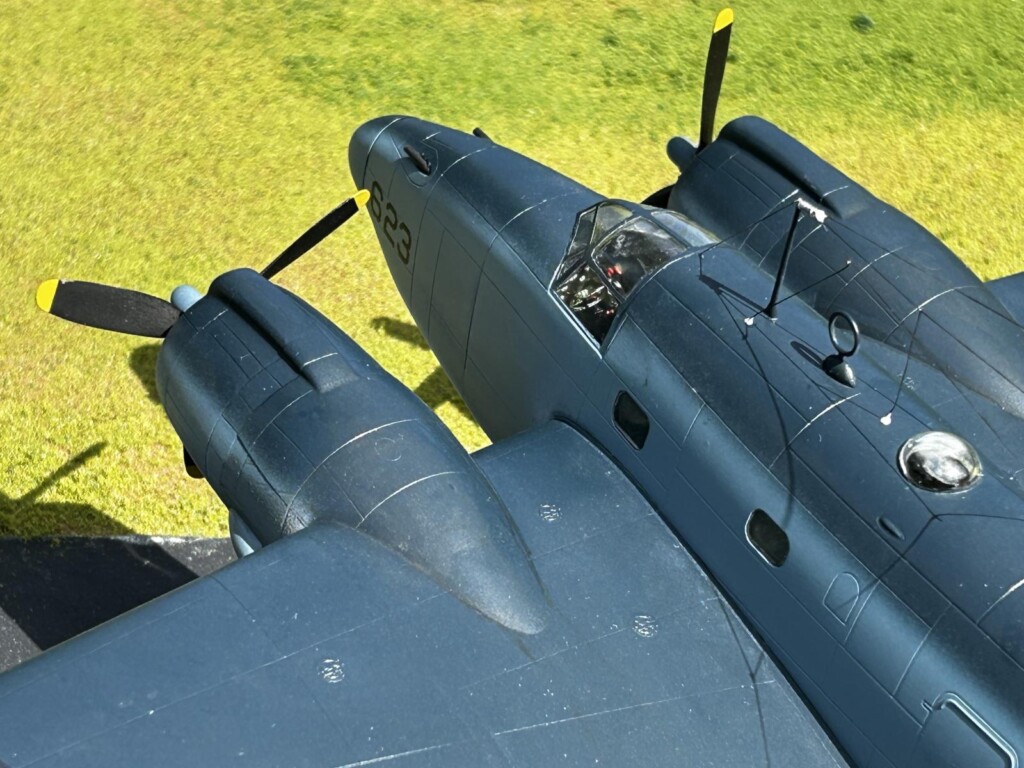
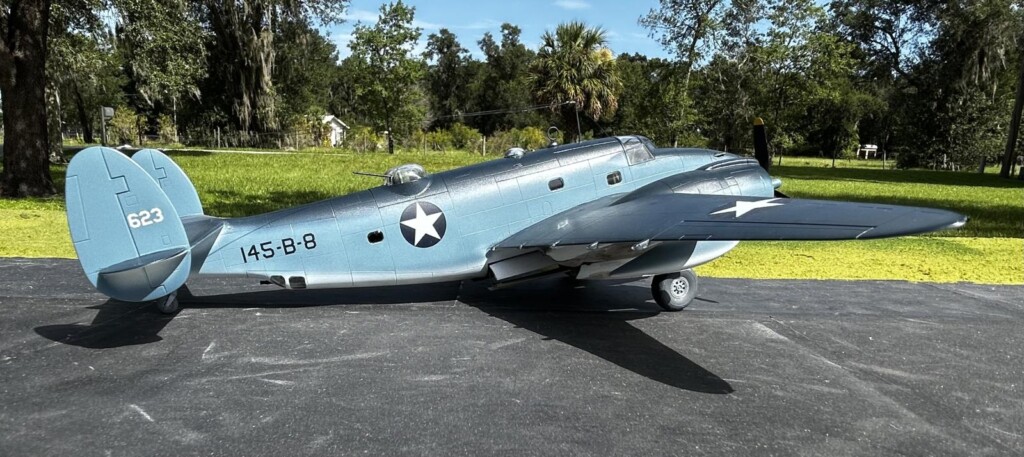
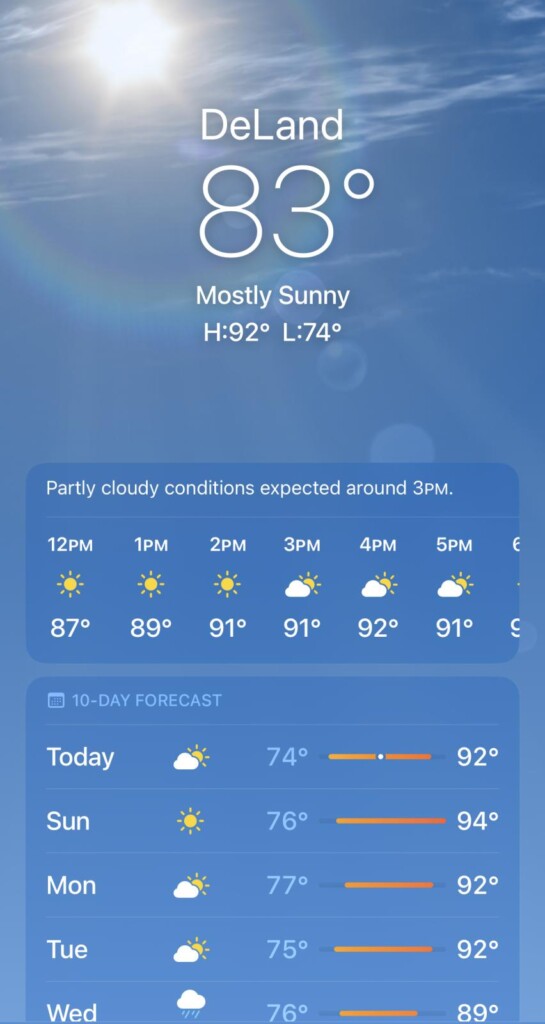
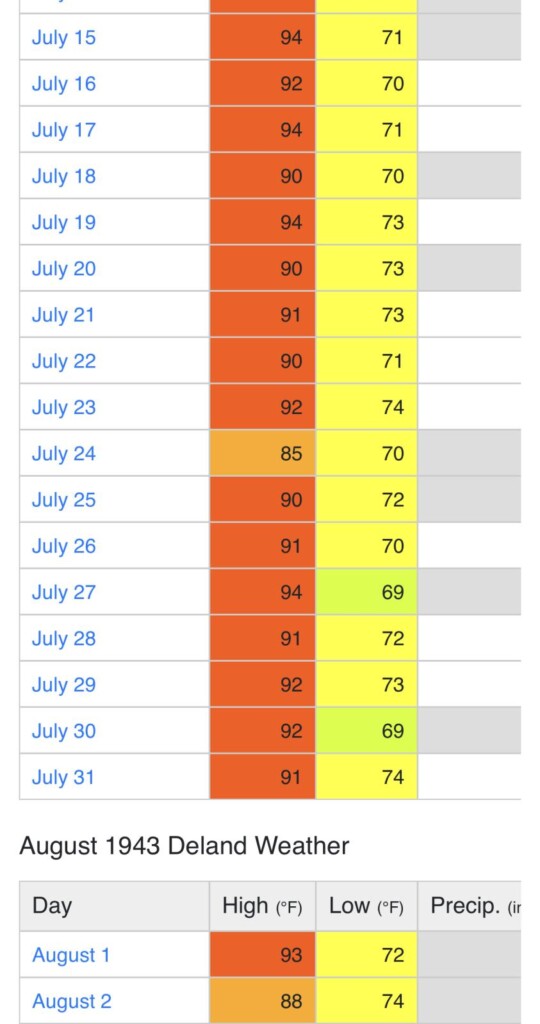
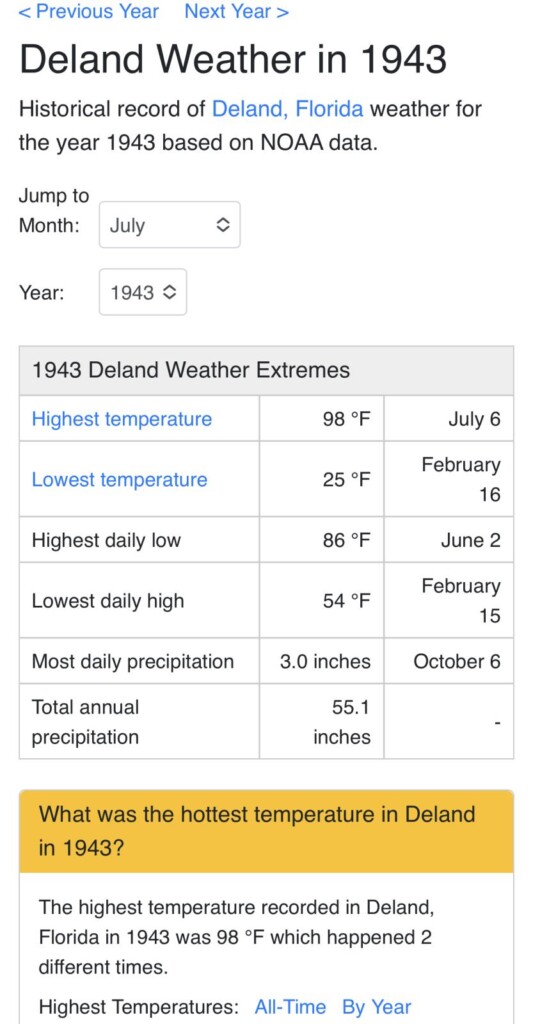


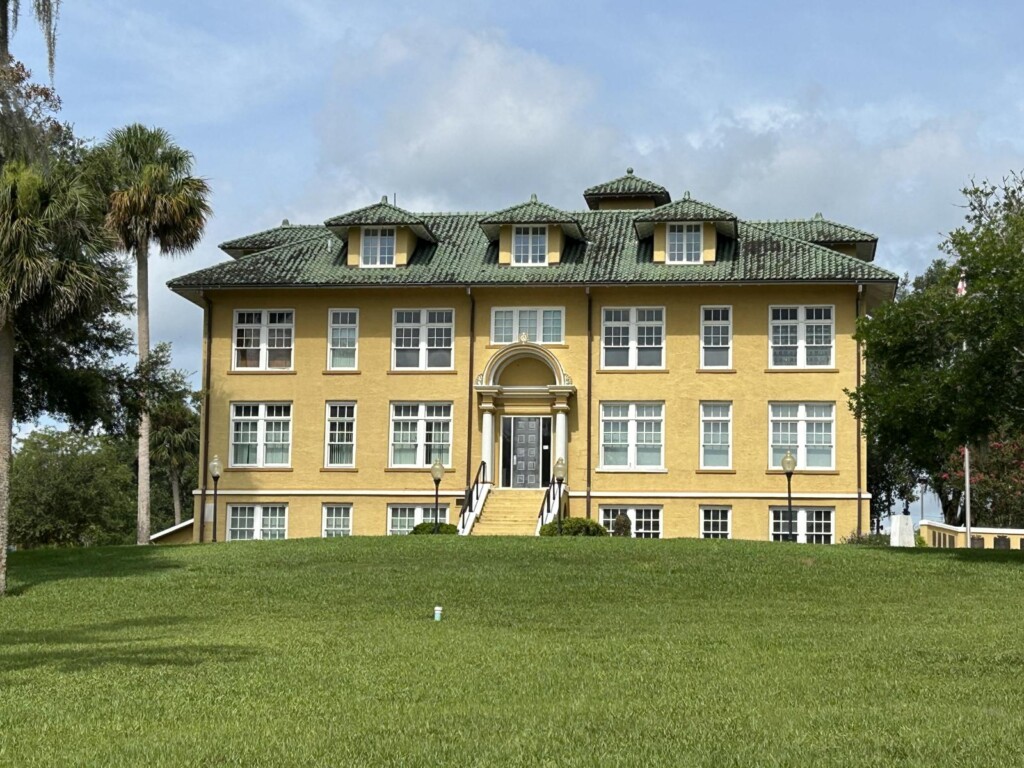
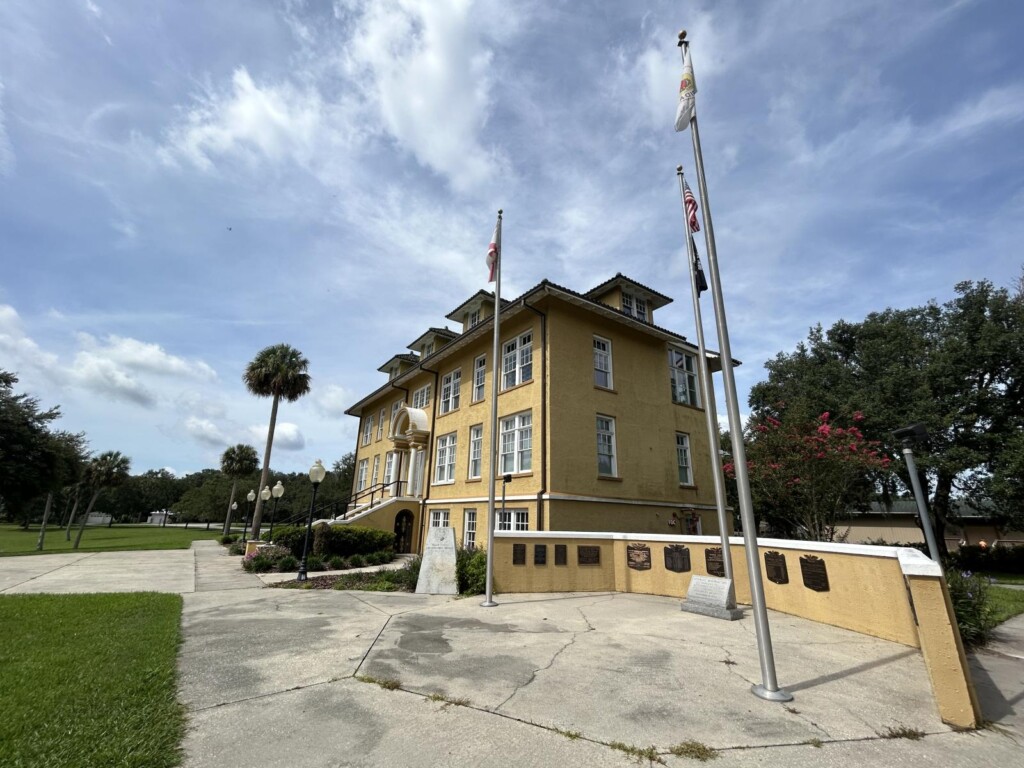
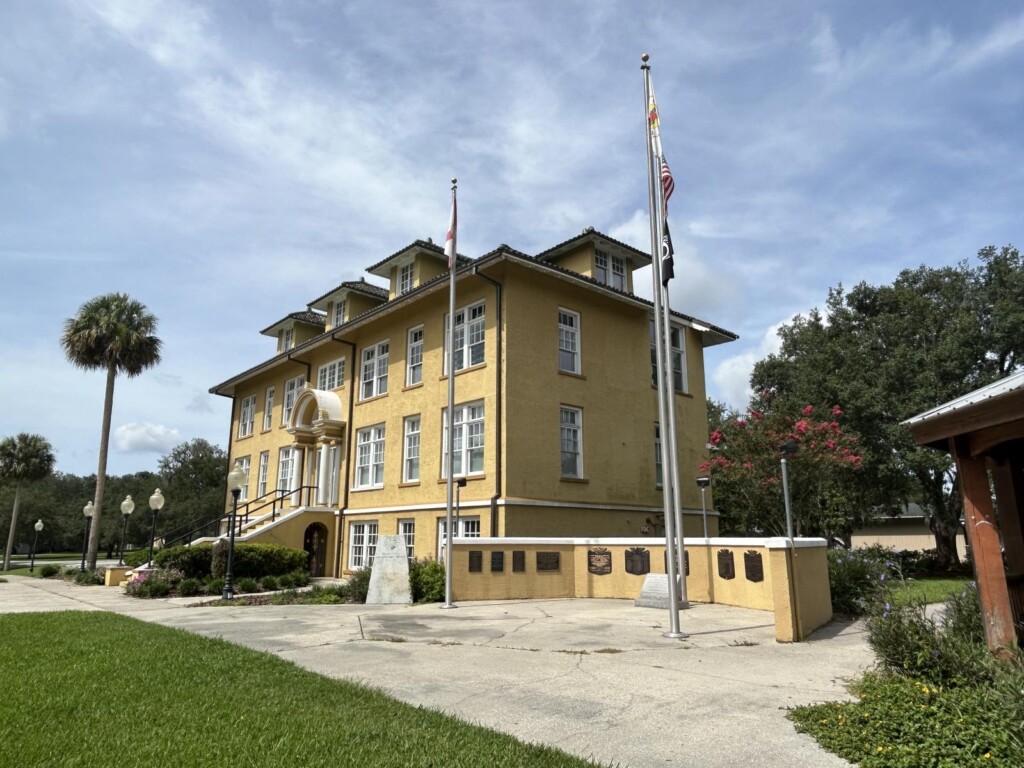
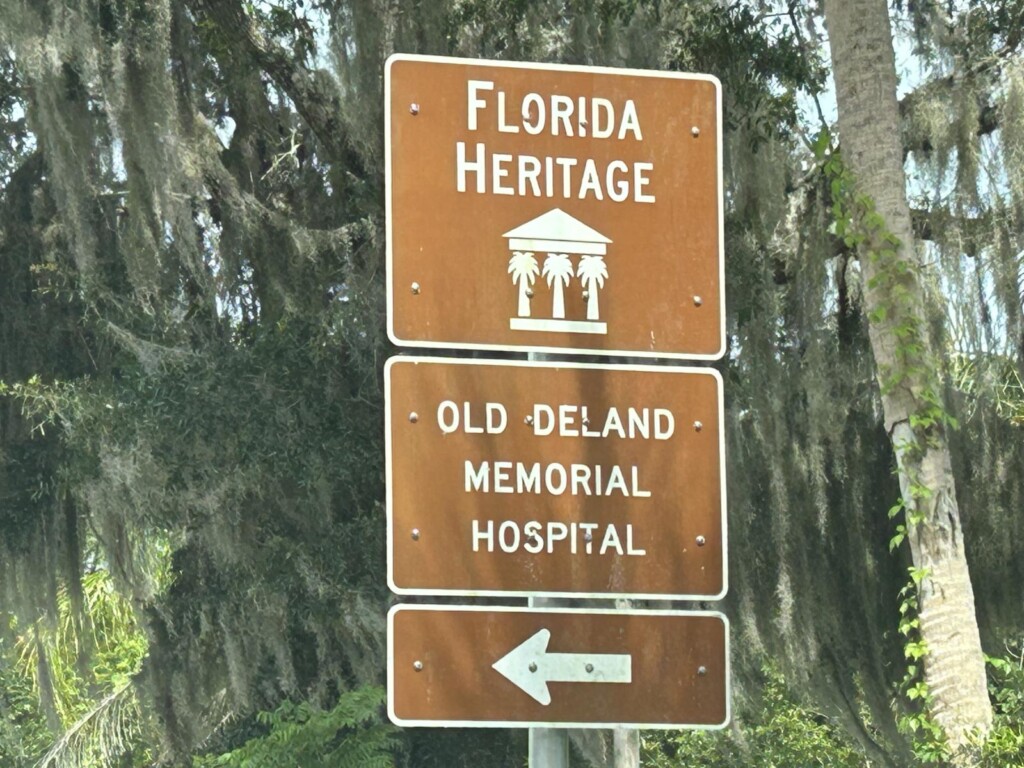
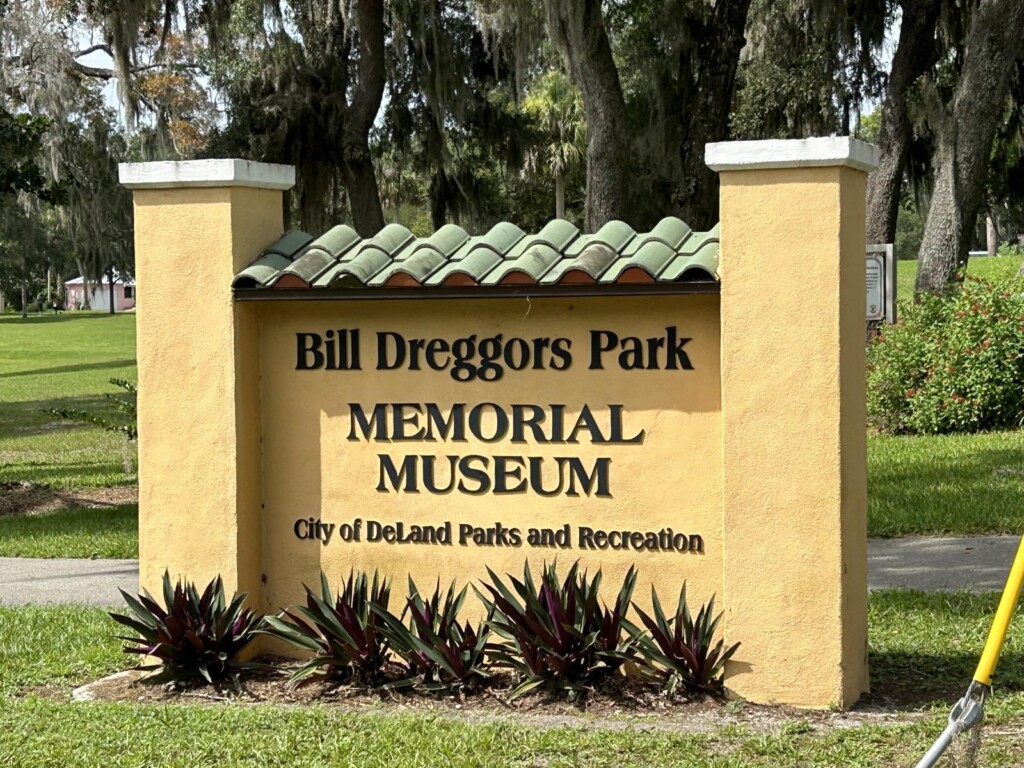
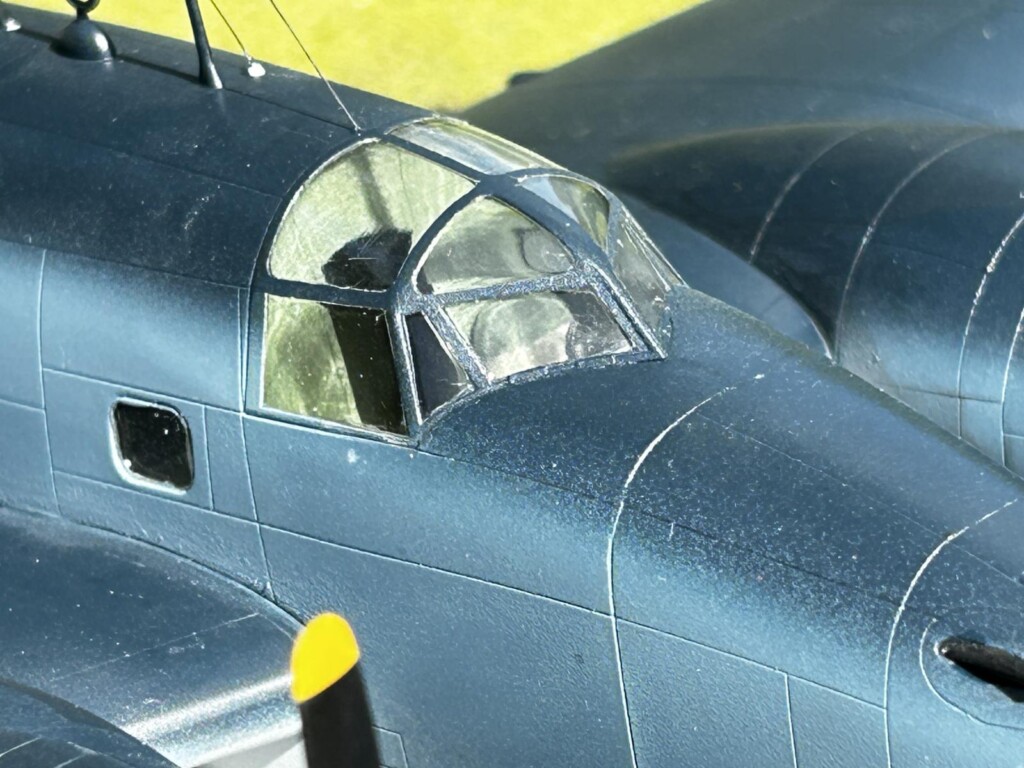
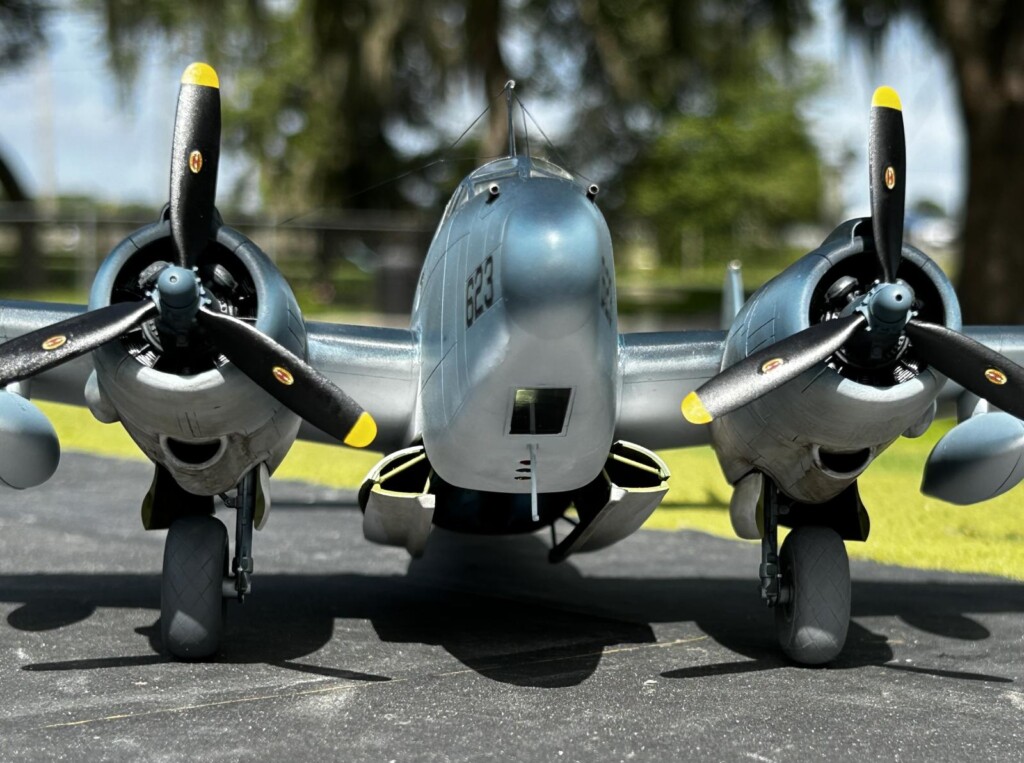
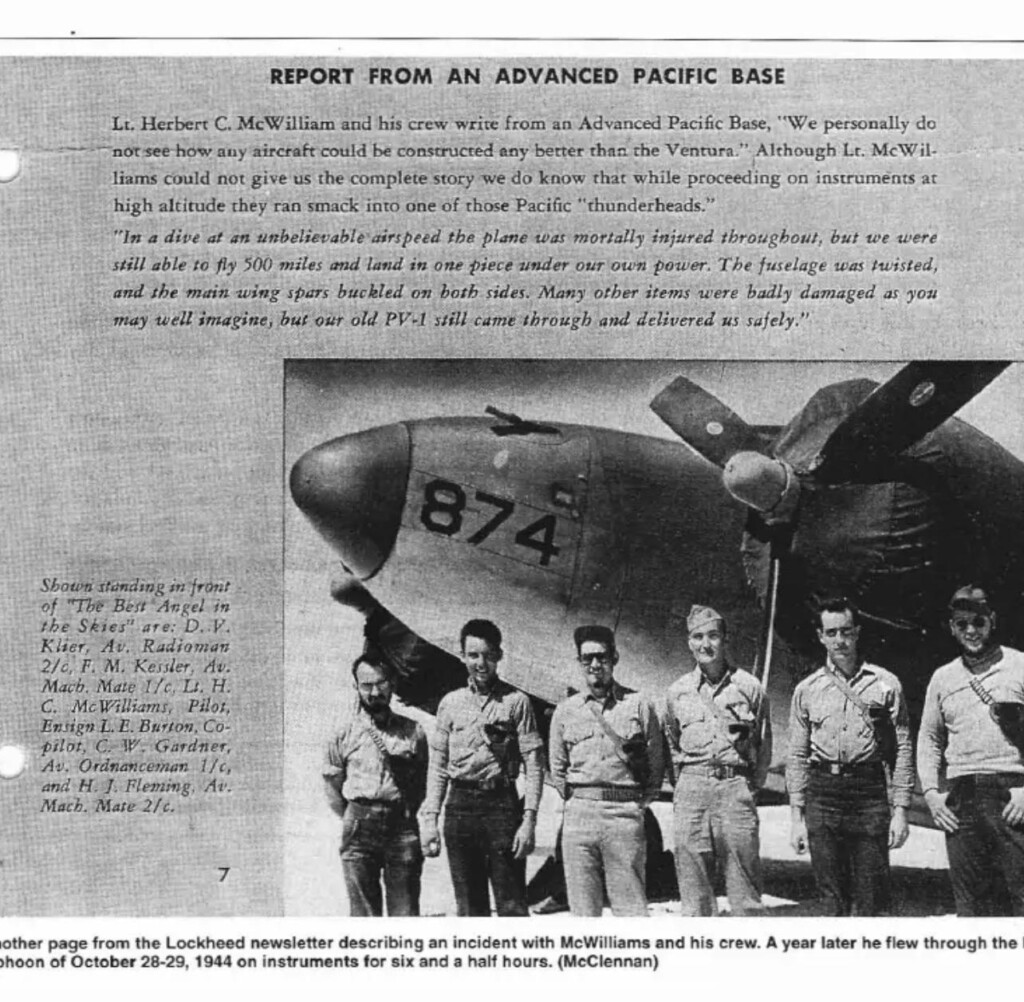
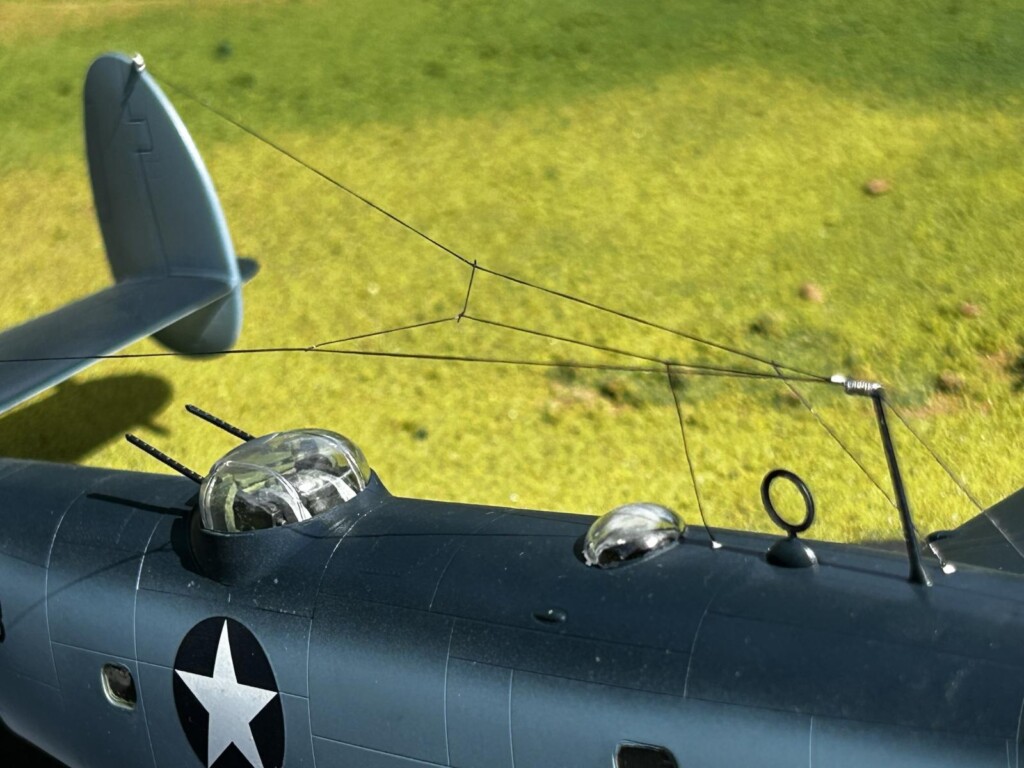
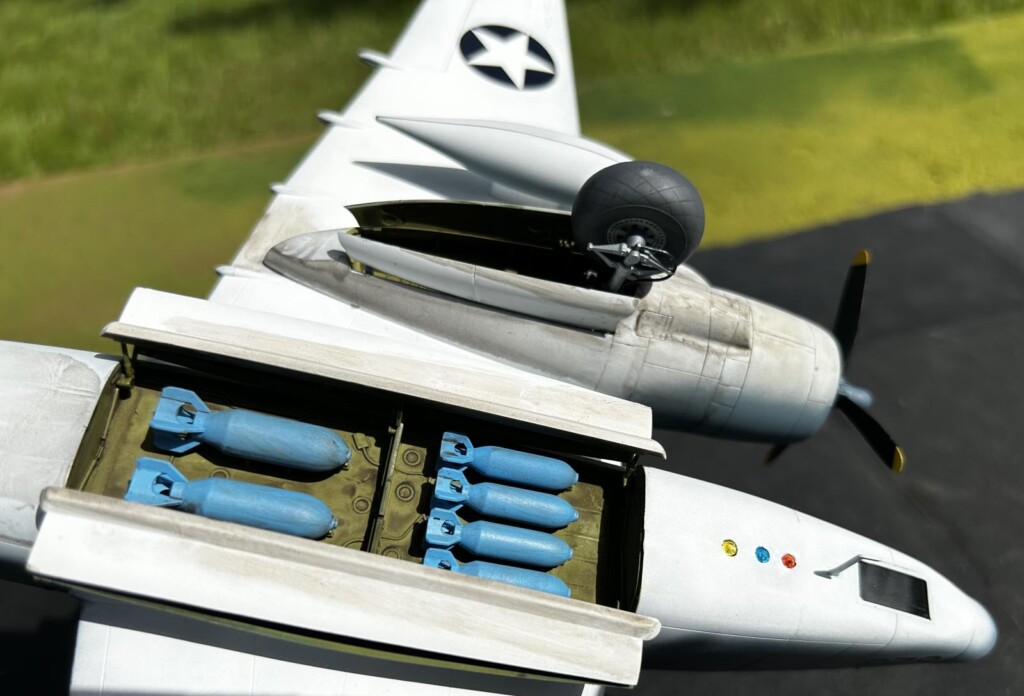
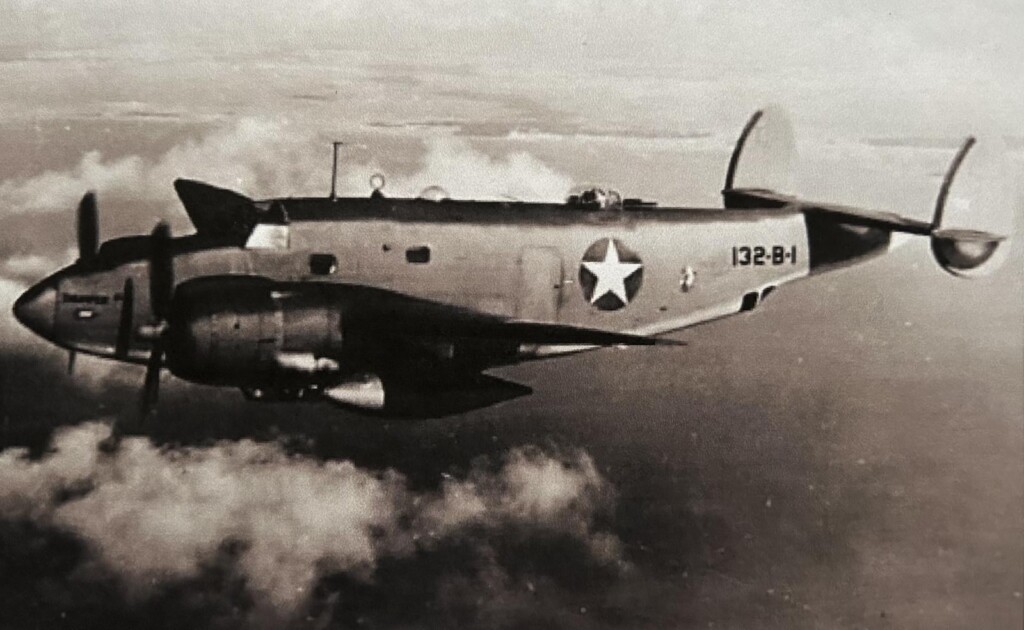
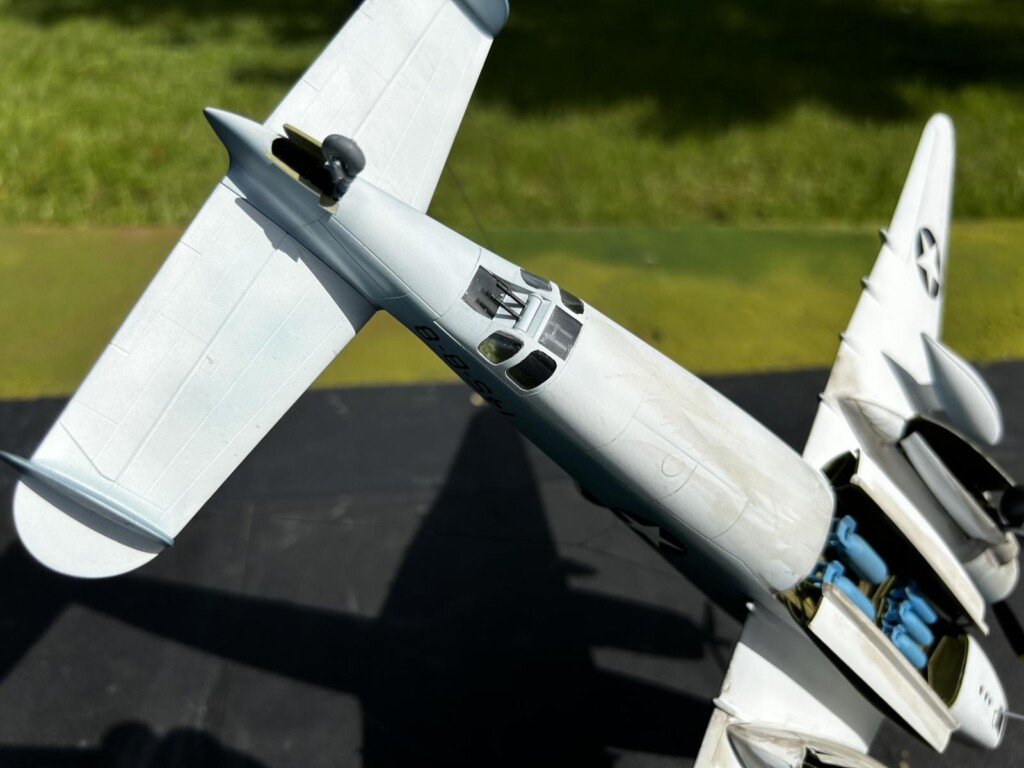
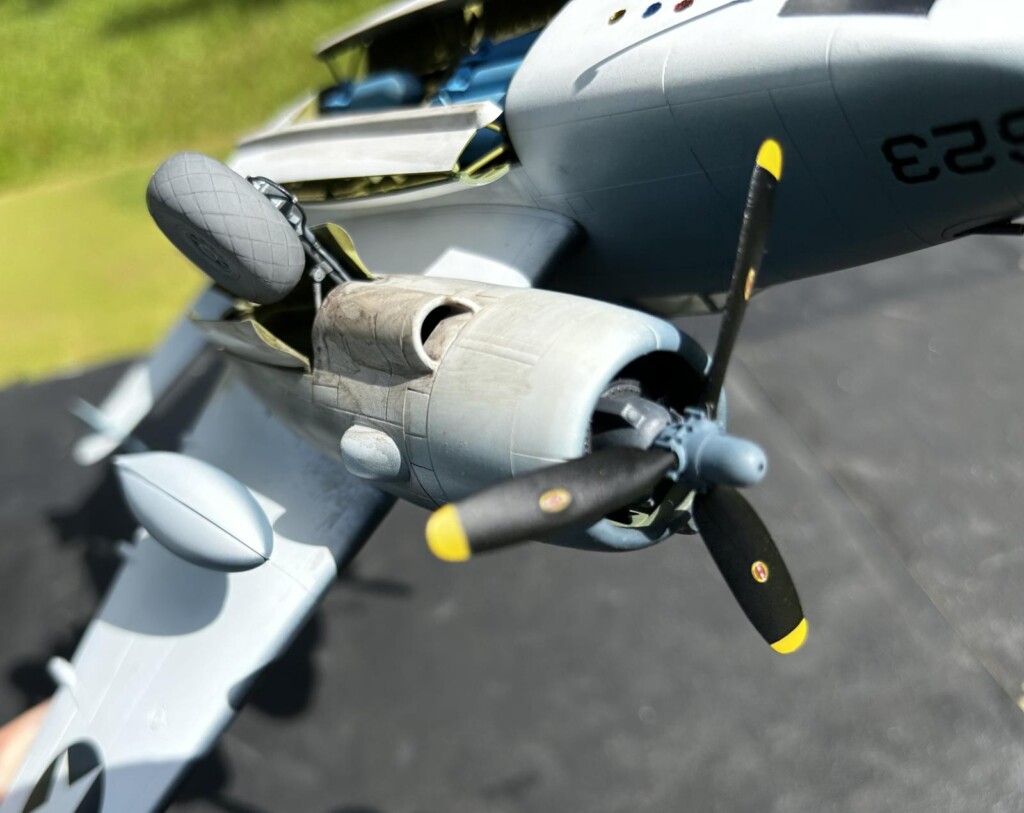
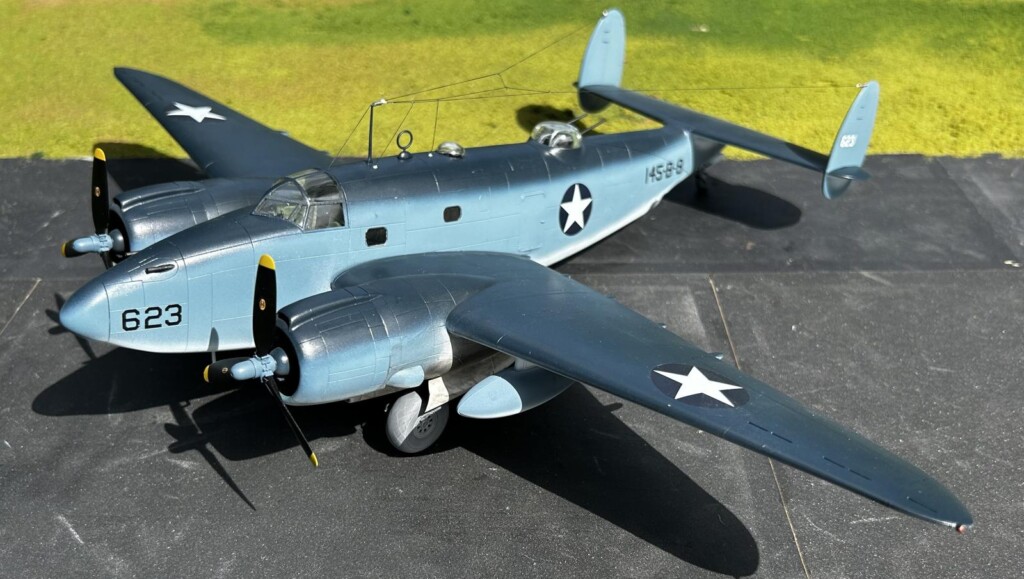
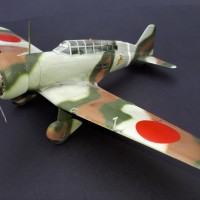
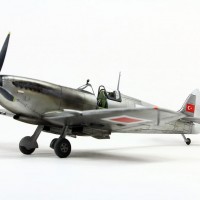
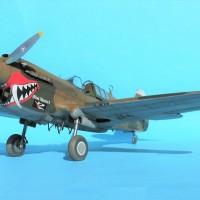

Great article and terrific model from you, Louis, as always.
Great looking Ventura and excellent story Lou. You should do a book on this.
Great article and model, Louis. These local airfields are always interesting. I live a little west of NOLF Barin in Foley, Alabama and regularly see the Texan IIs from Whiting Field in Milton, FL using it for takeoffs and landings. NOLF Summerdale is still in use too.
MAN! Now that's a write up! Well done ALL around, Louis...research, write up, execution, etc.. Oh and by the way...that's one great looking build and result. Loved watching the progress.
Great article and great model airplane ! You put a lot of effort in to both.
Well done on all points @lgardner. Excellent history and research, solid photography, topped off by a great model.
Excellent presentation and model Louis. Love the passion and effort you have put into this project. The back story is fascinating learning about what was a daily routine while war was in the Pacific and Europe. Though in Florida, U-boats were about, trying to bring the war to our shores the only way they could. Meanwhile in the Westcoast the Japanese also patrolled along the coast yet there is much more to that story. The Revell kit is a good kit, I have one myself as well as the British version. These are getting hard to find also. We have such airfields here up and down California, like Chino as an example. Thanks for sharing.
@lgardner
Your Ventura came out of the works looking good Louis. I like the diffuse line between the fuselage blues, and I also have to mention those aerial tension wires, a great add-on touch!
The background story is full of interesting details, some go way beyond the actual aircraft story itself. Great reading 😉
Wonderful article buddy @lgardner. Very nice looking Venture, this one on the wish list.
Splendid build Louis. The photos are magical to tell the story. Love it!
Excellent result and ditto article, Louis!
What an awesome research!
Congratulations my friend!
Excellent write up and ditto result on the Ventura, Louis @lgardner
So much historical facts gathered by your extensive research and packed in this great article.
Thanks a lot.
I don’t know where to start, Louis. I know this came from the shelf of doom, which makes it even more remarkable!
I’ll start with the historic part. What a story! Your research is so thorough - absolutely enthralling.
Then the photos - all of them! From the black and white archive shots, to the modern images you took yourself and then the fantastic shots of your build, phenomenal. Capturing the build outside was a great idea, matching the light and landscape that the airfield is on.
Finally the build itself. Another trademark build, Louis. So clean and perfectly painted and constructed. Beautiful!
This post and build, are in every sense, epic!
Nice article buddy and a good looking Venture as well. Two thumbs up. BTY, looking for another one? Got one in the stash that's looking for a home.
A fine article, indeed, Louis! 😊 So well done and enjoyable, as is the model! 👍
Quite the history, and a very nice model to accompany it! Well done as always!
Awesome job Louis, @lgardner
Love the Build and the very good read that tells a story of remembrance. Perfect!
Hello Louis,
I followed your orders and went trough the whole article. Tremendous. I was showing it to my wife. She told me. she lived in Sandford for a while, not to far from Deland.
The effort you put into this article is hughe. But for me it was like reading a book. All the information and the superb model made it complete. I have to pay tribute to the US (local) authorities by keeping the house from the NCO's in good order. What a site to visit.
Highest Compliments for sharing this story with us.
Regards,
Derek
The Netherlands.
The German U-Boat operation on the US East Coast was called "Paukenschlag" or "Drumbeat". Taking the measurements (gross tonnage) into consideration, these U-Boats were operating at their limits. The self sufficiency of especially the technical department on board was stunning. Returning home, before the dates given in their operational orders was seen as a defeat.
Excellent research and build!
Excellent post Louis @lgardner- great work!
A timely reminder of just how deadly, training in these aircraft could be!
Wonderful research and detail, and a super build!